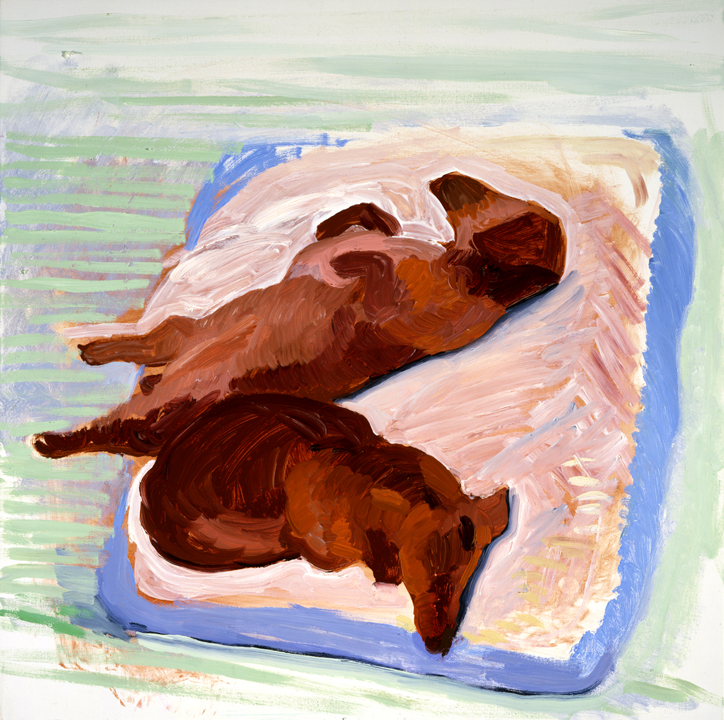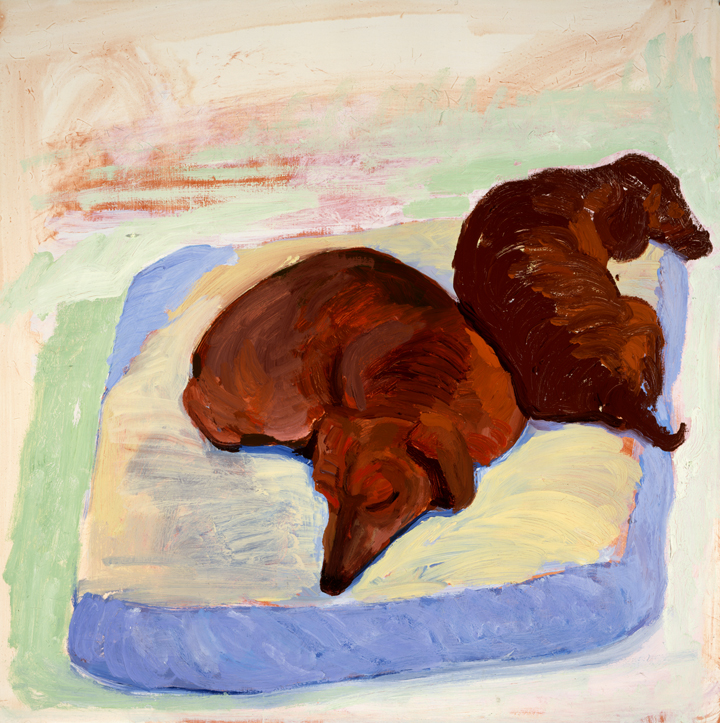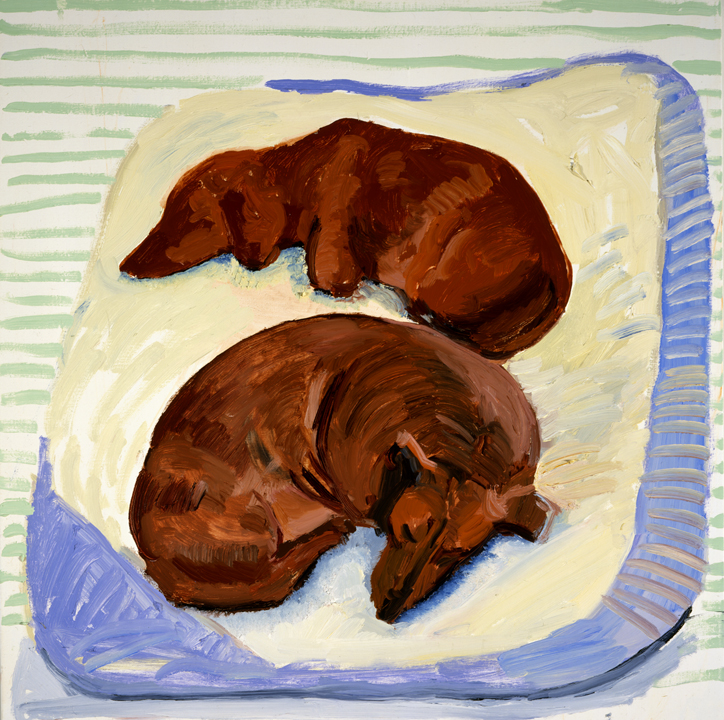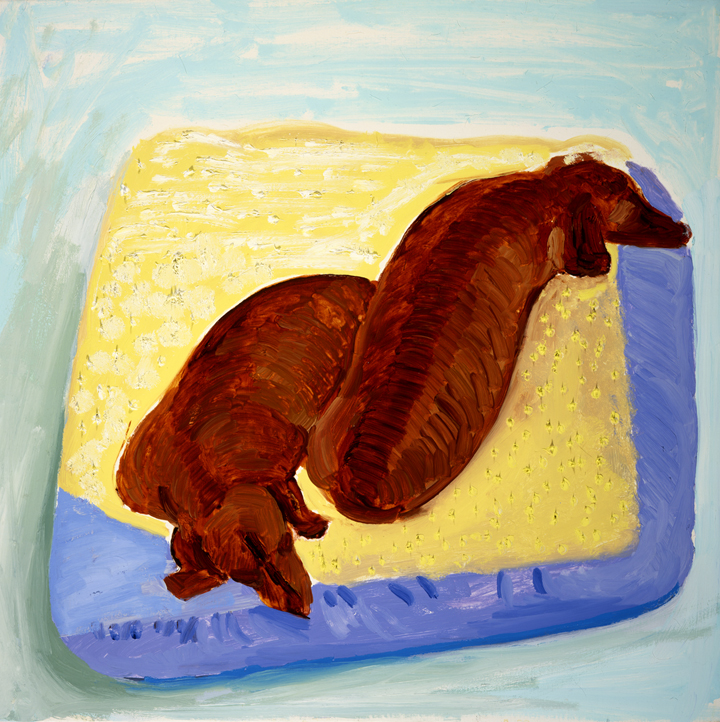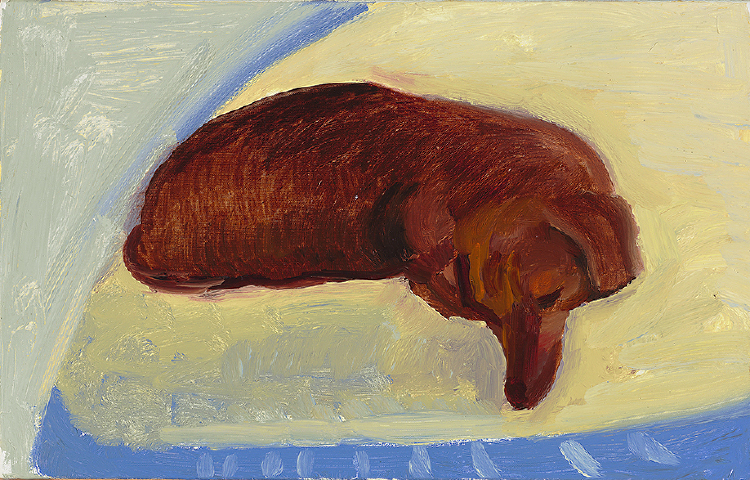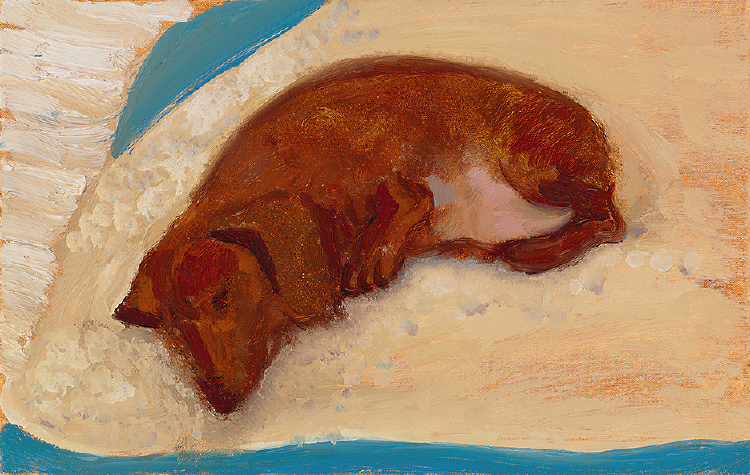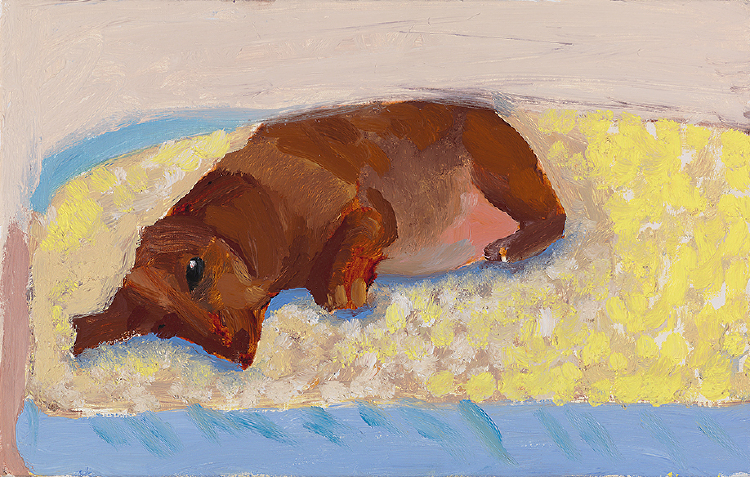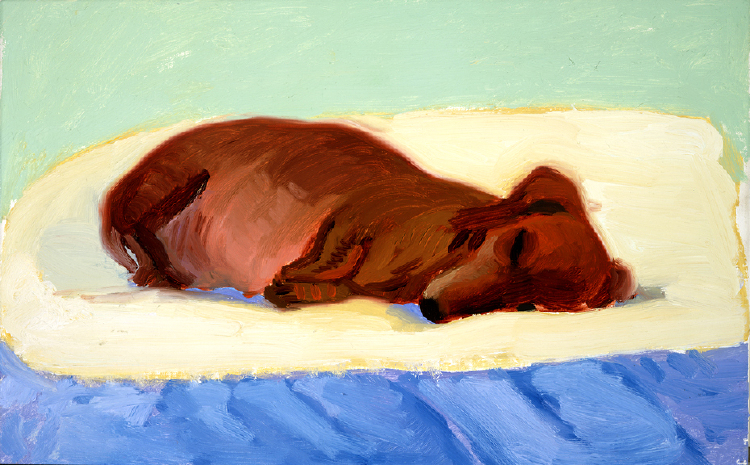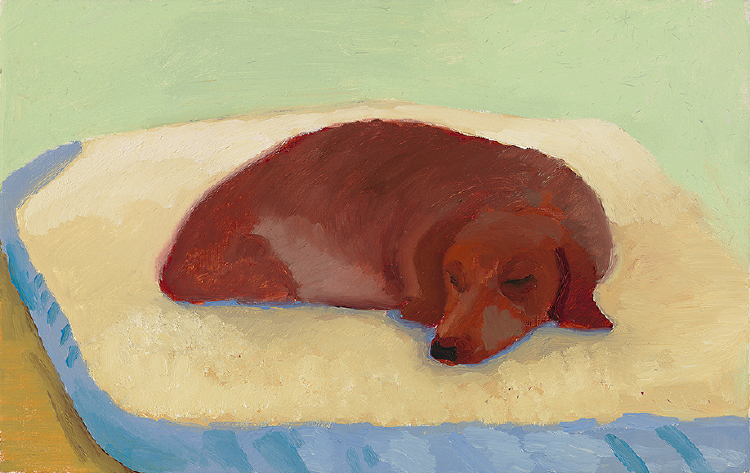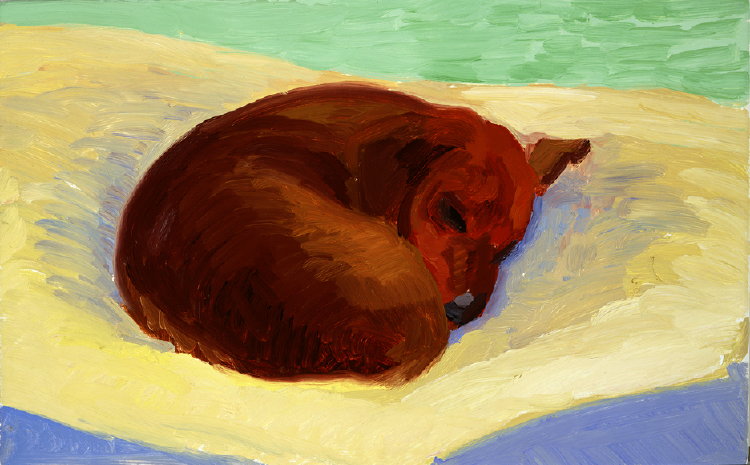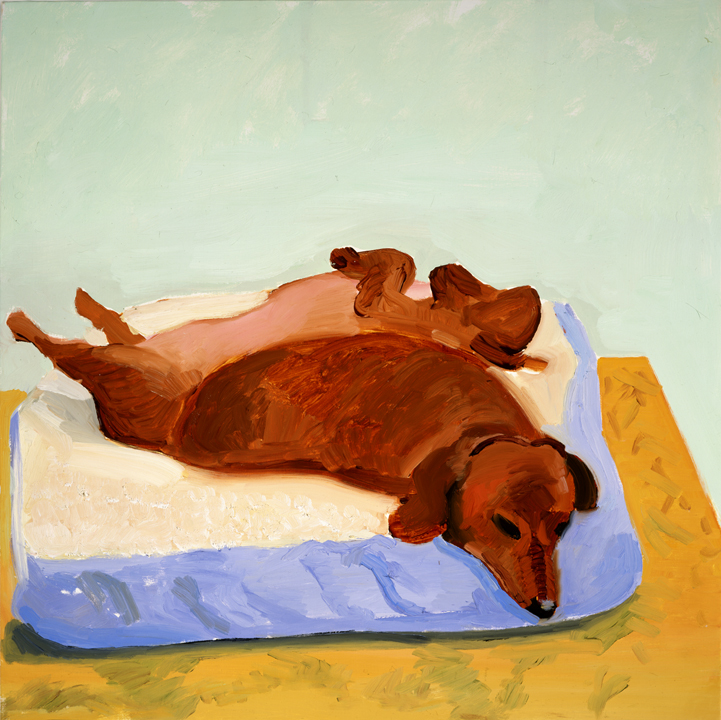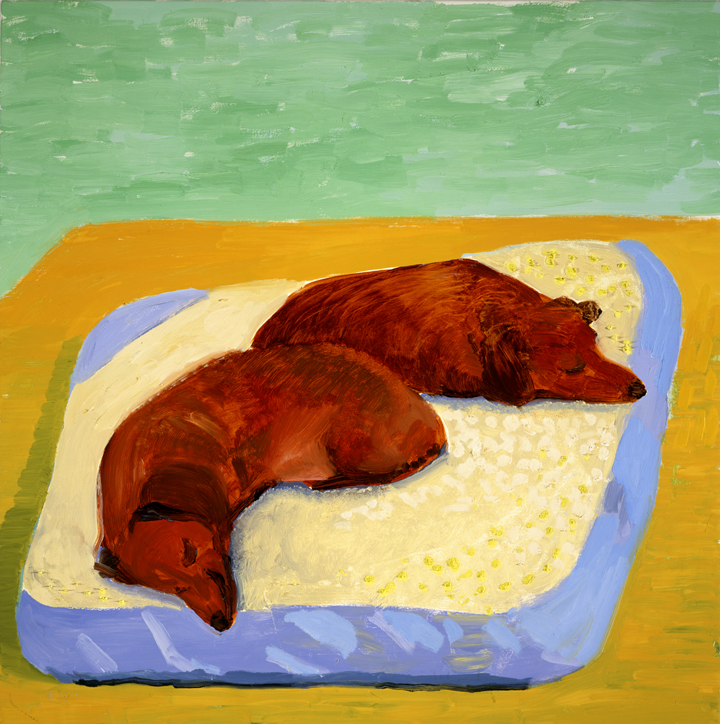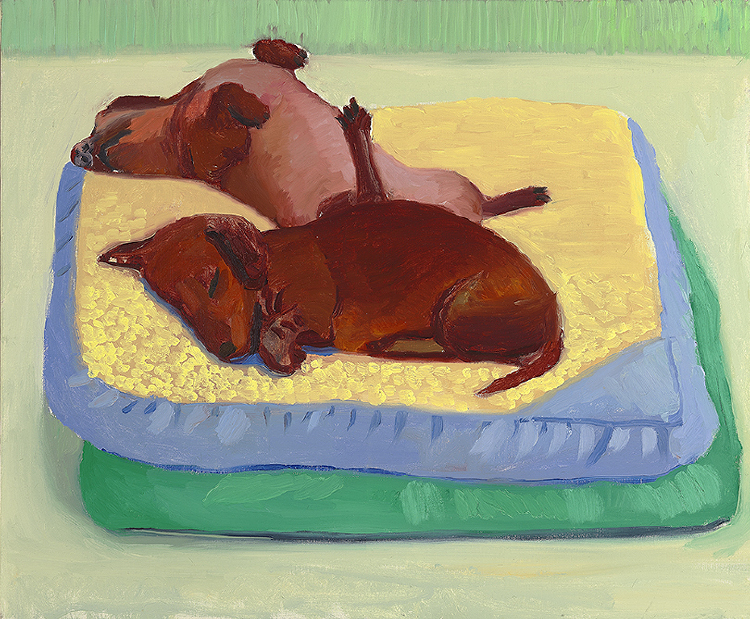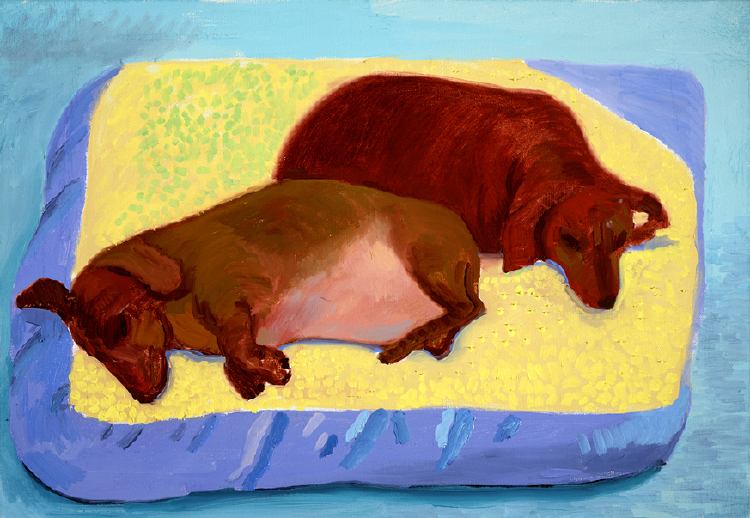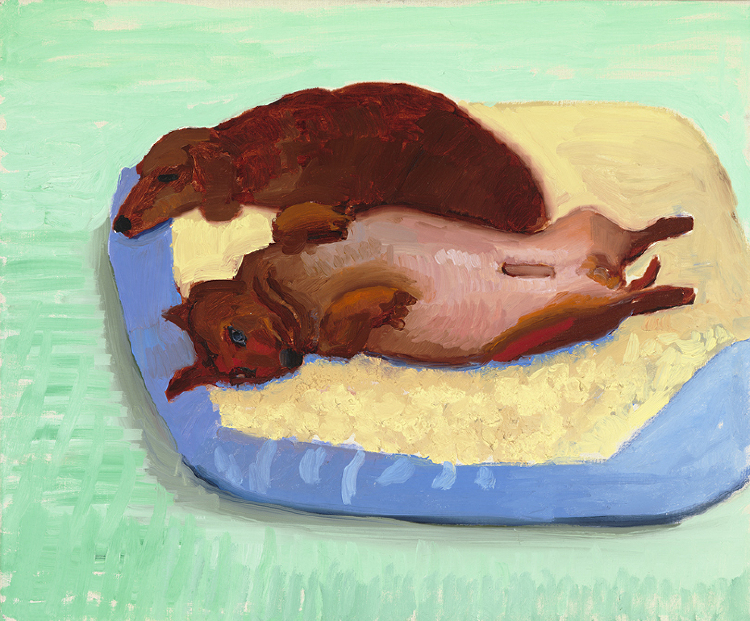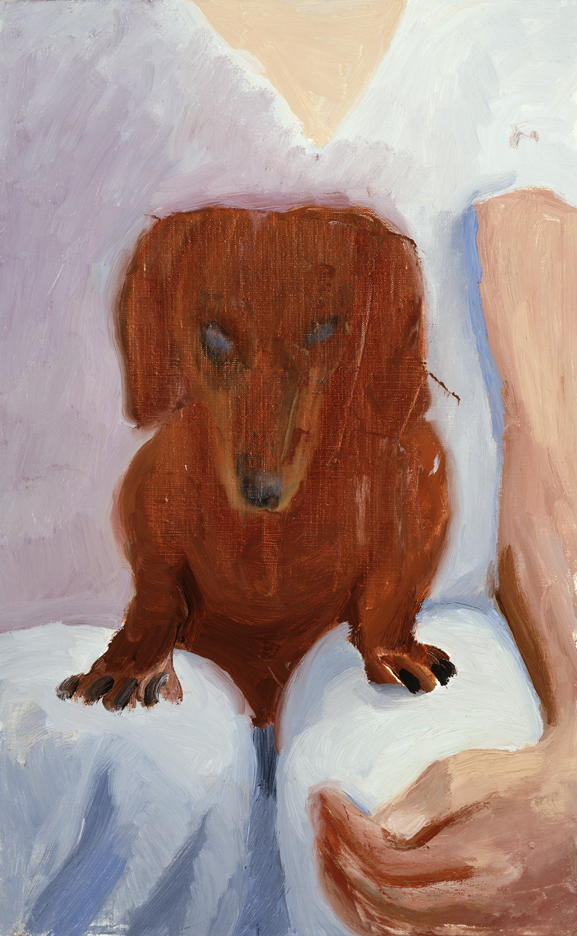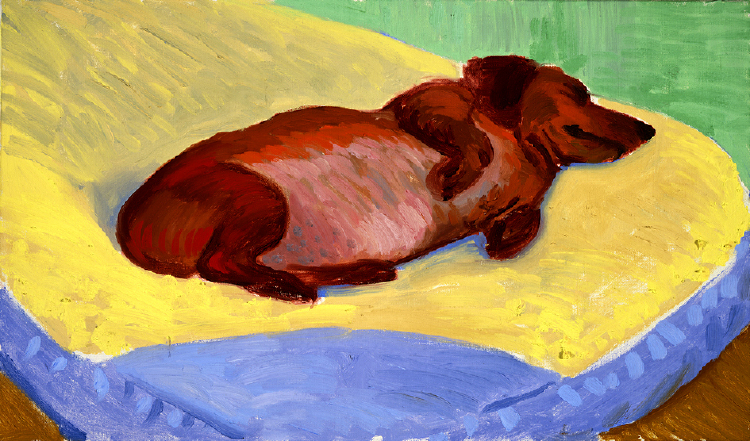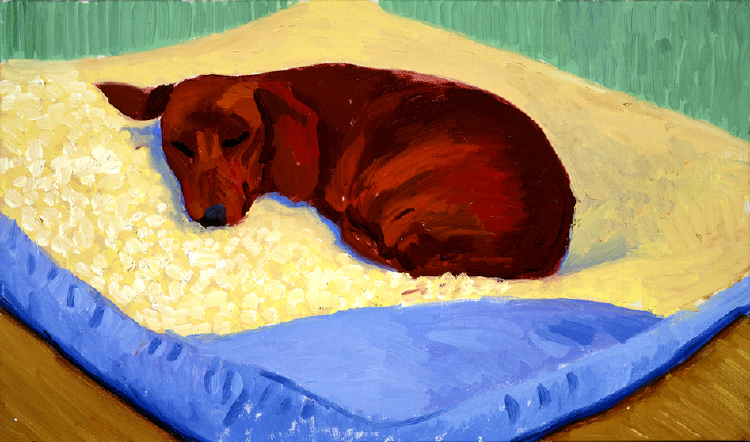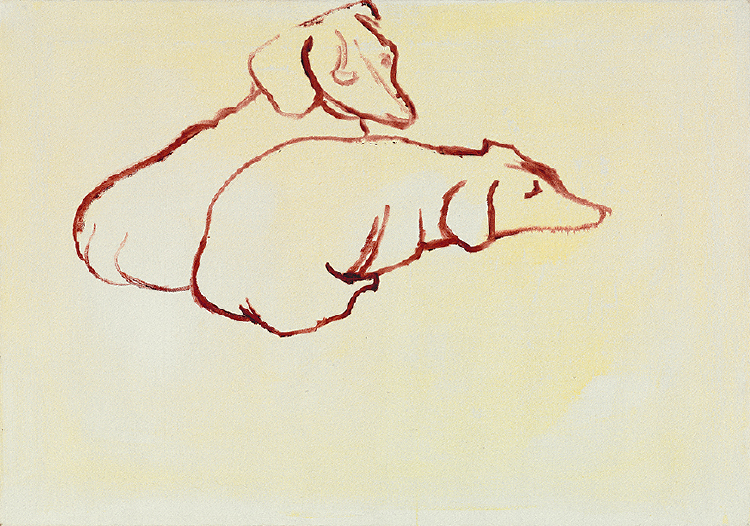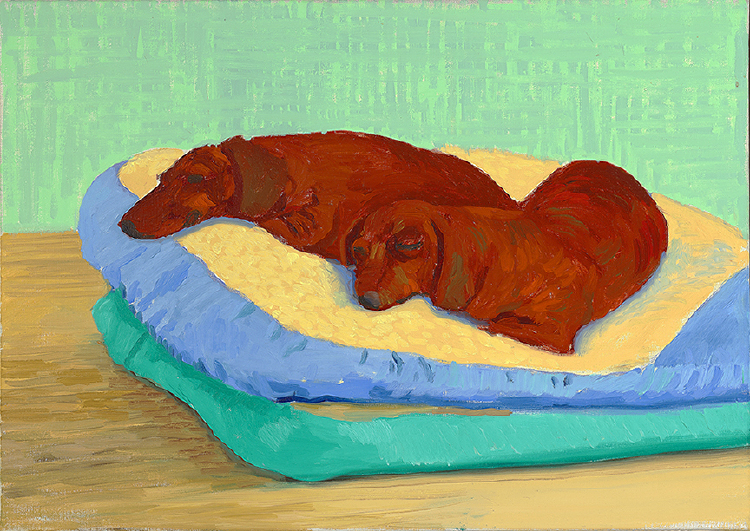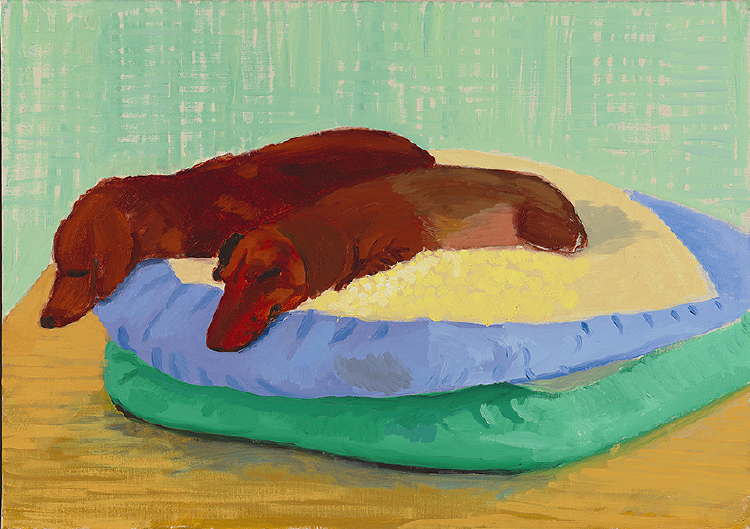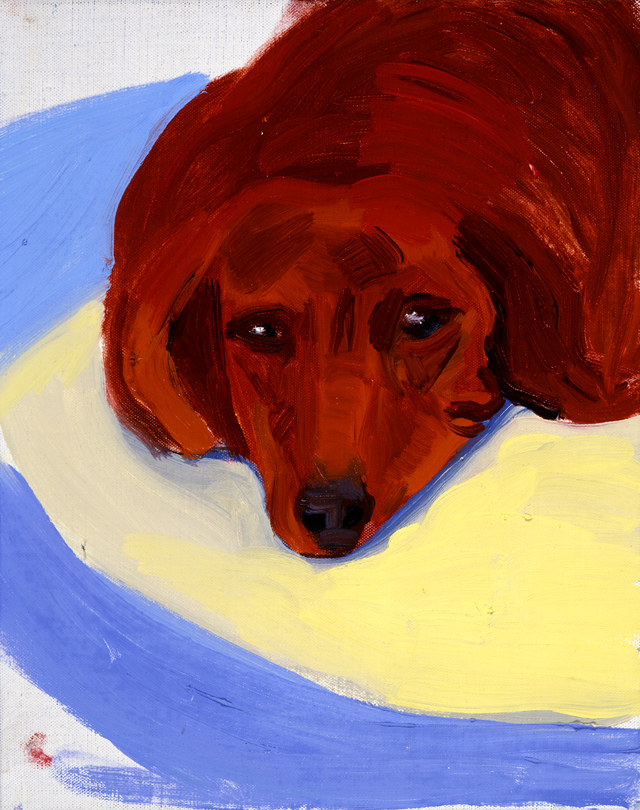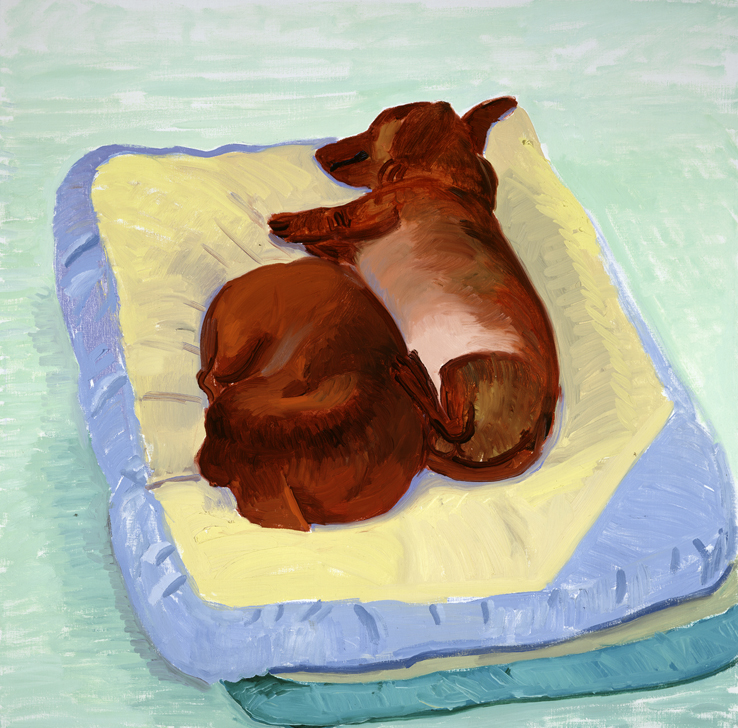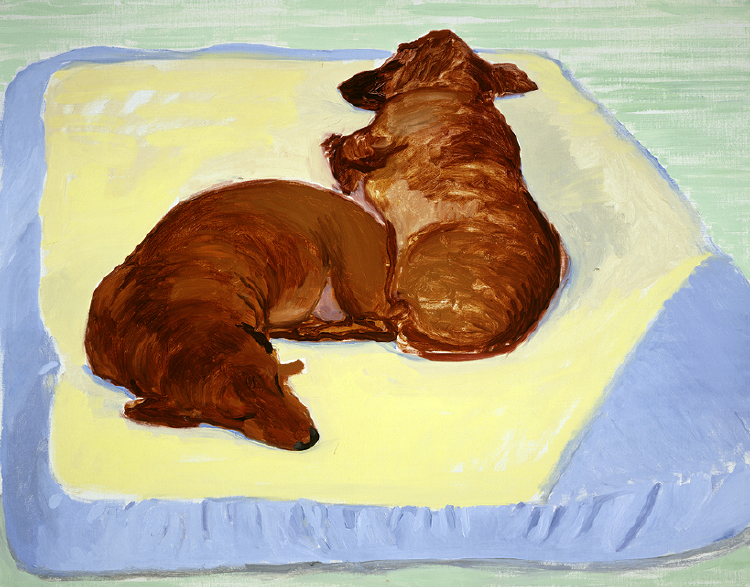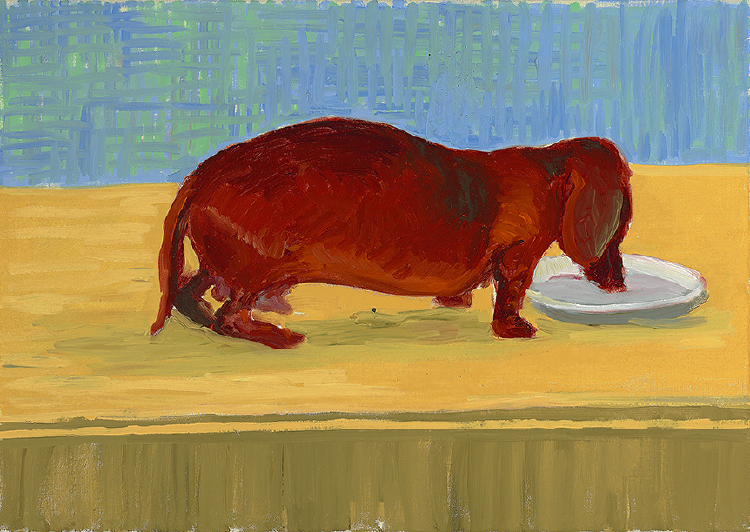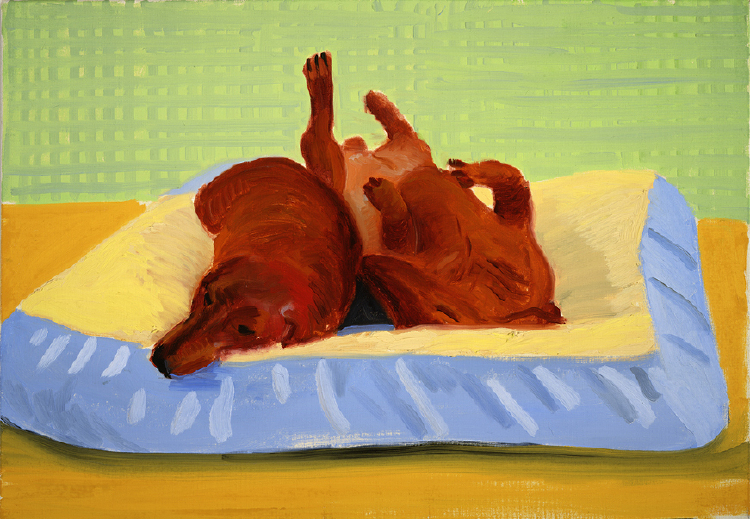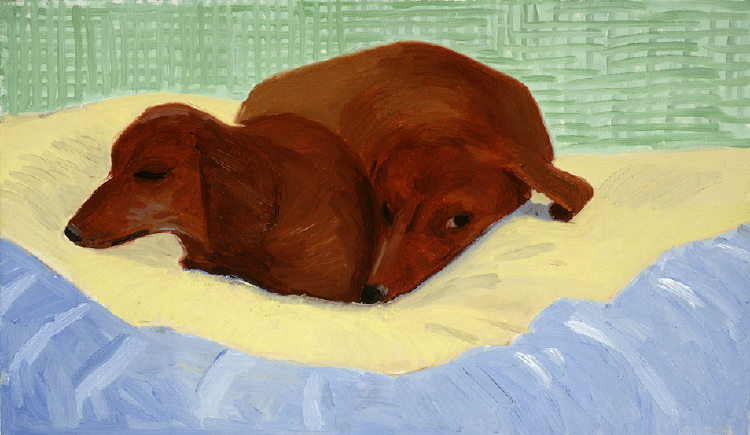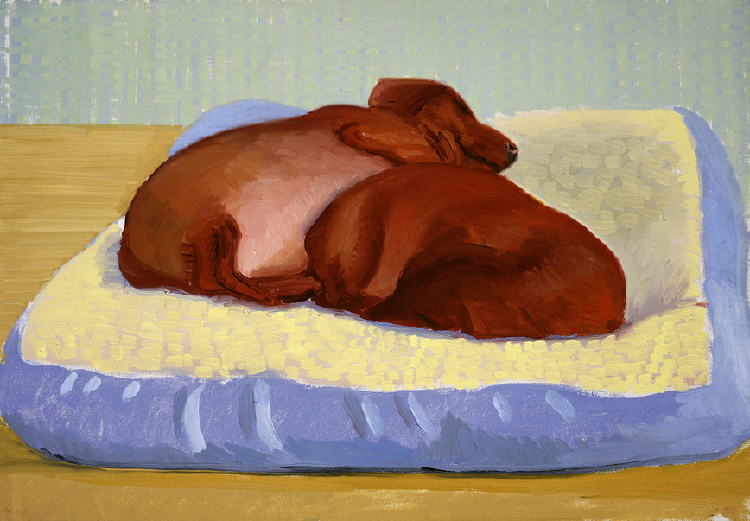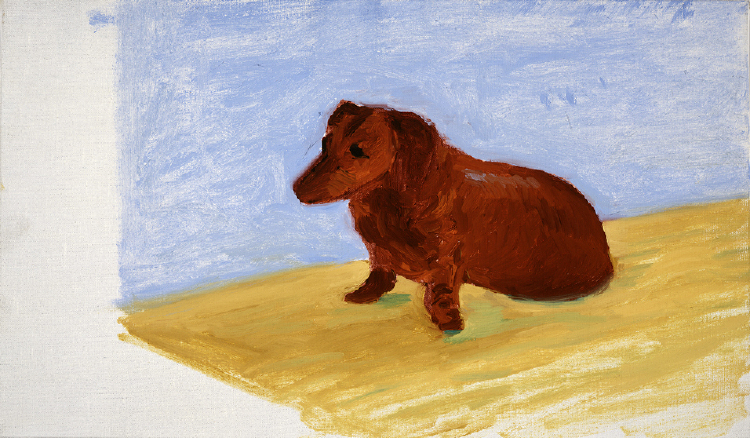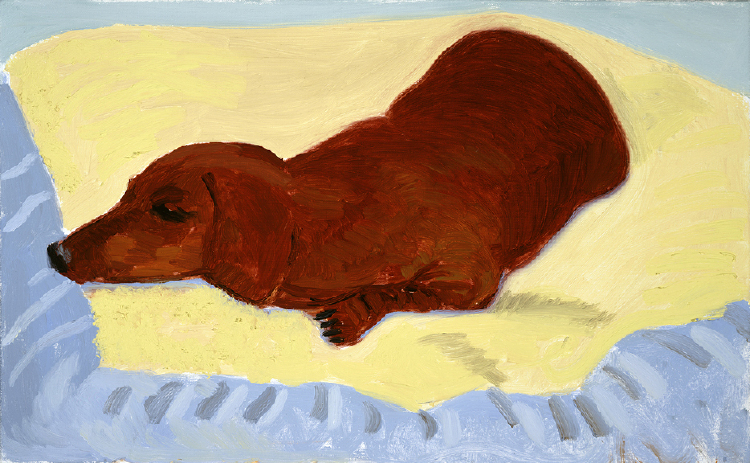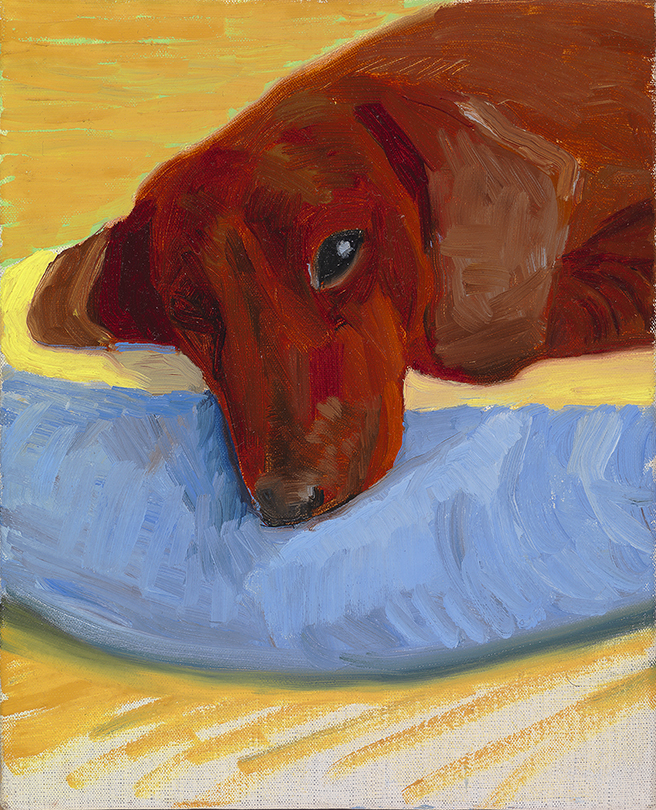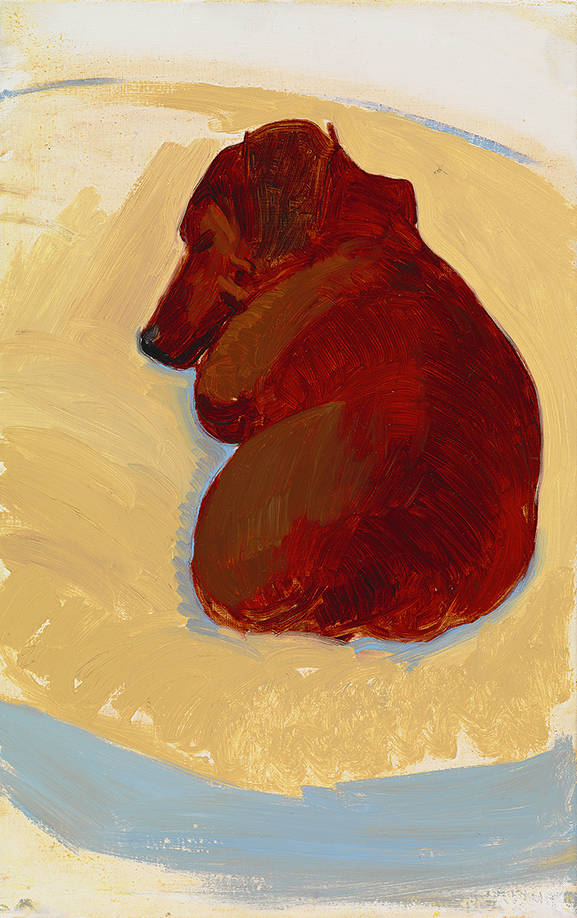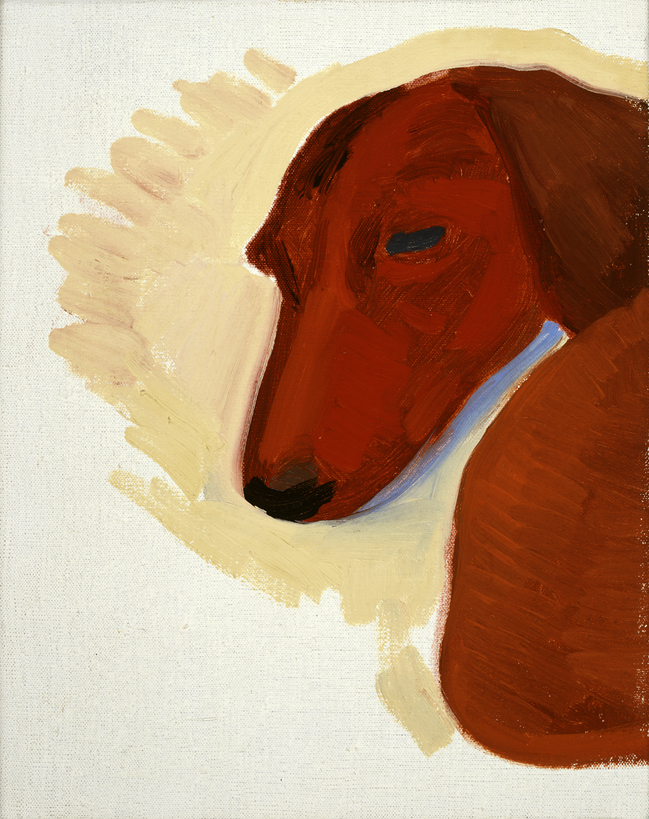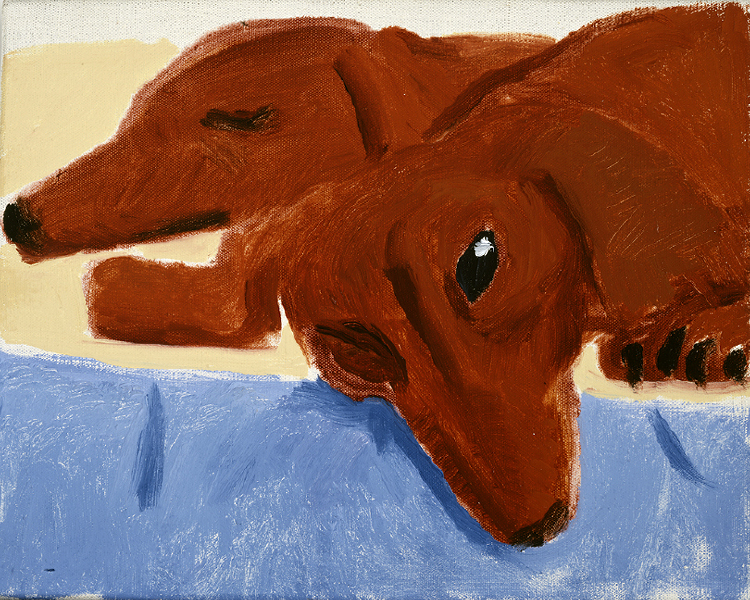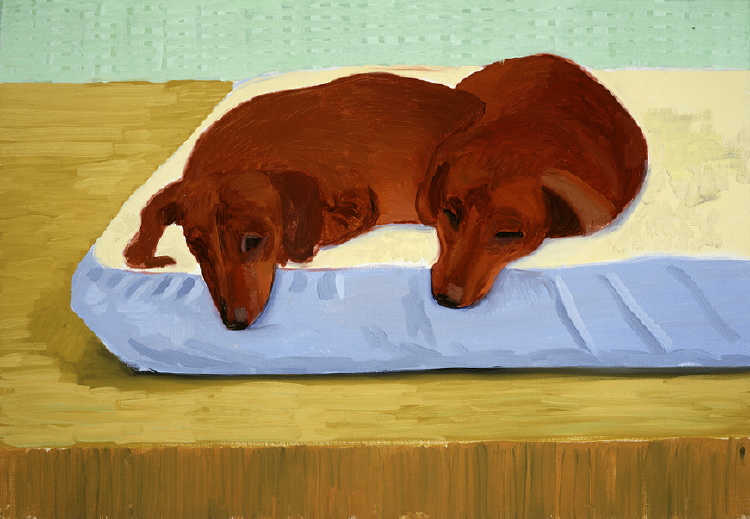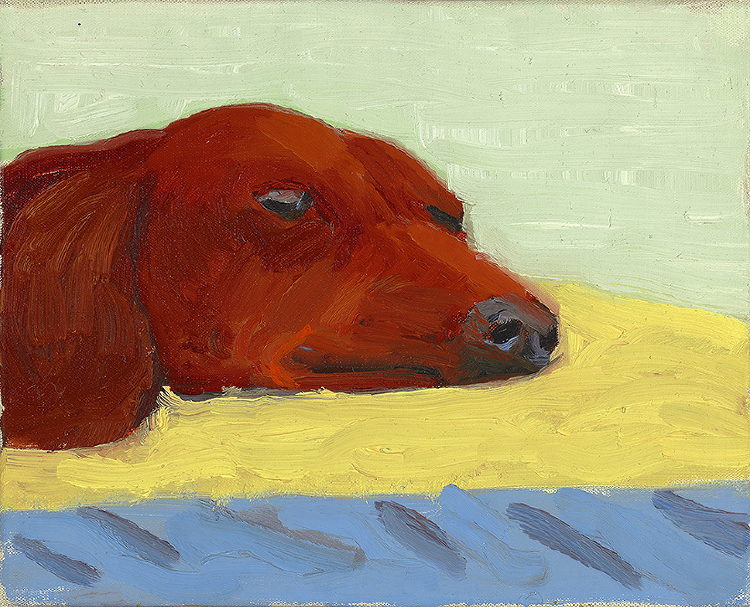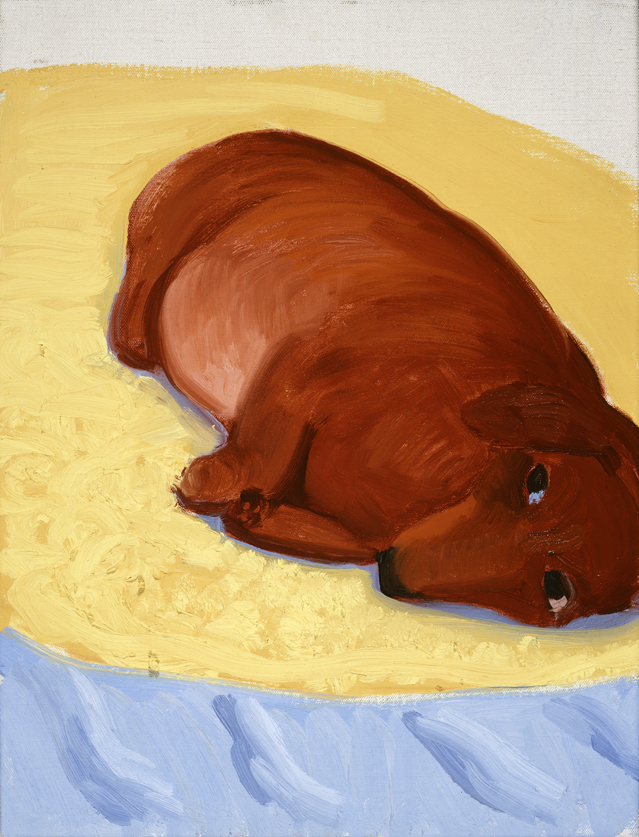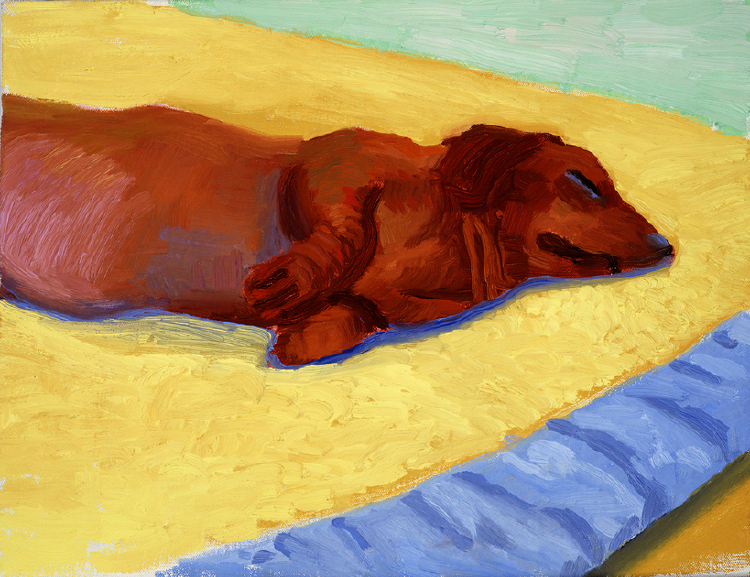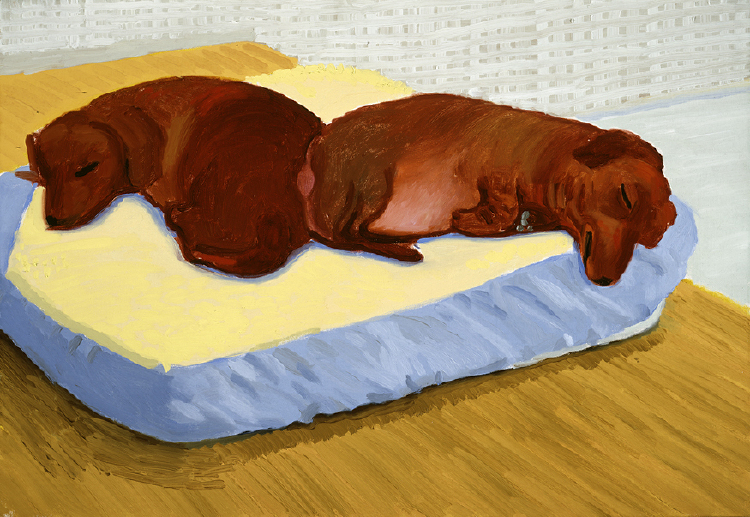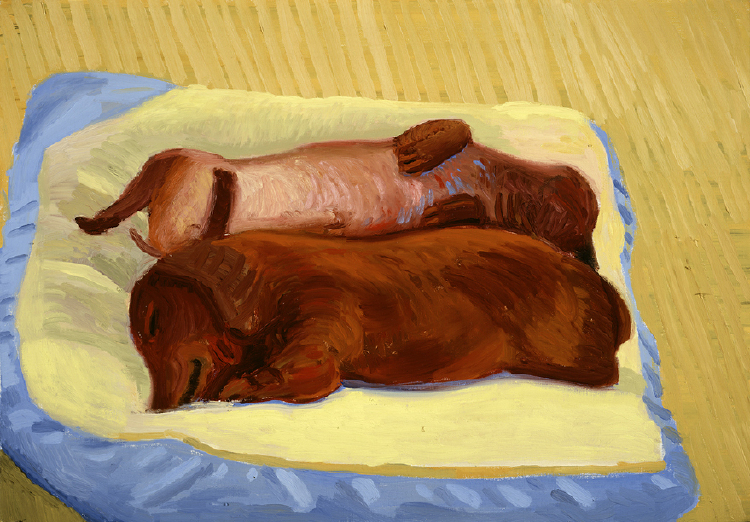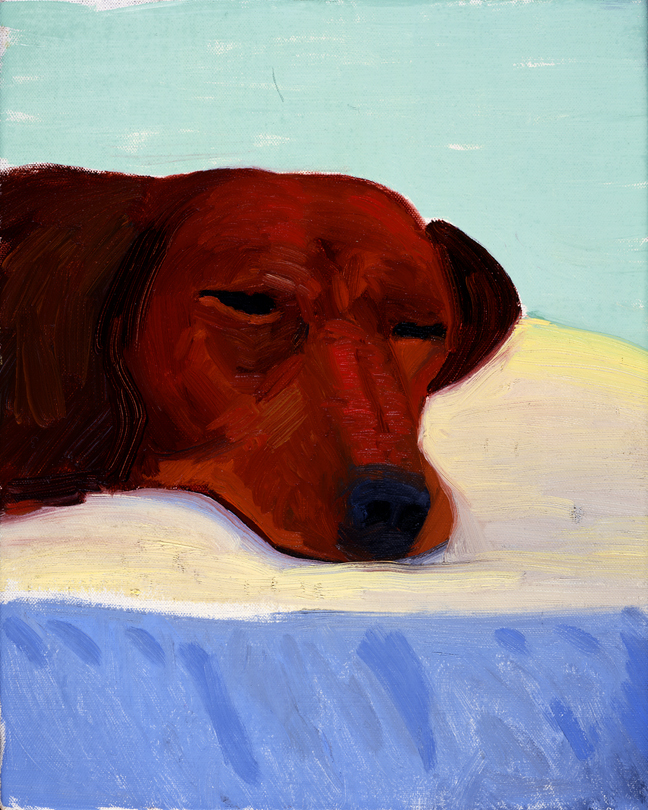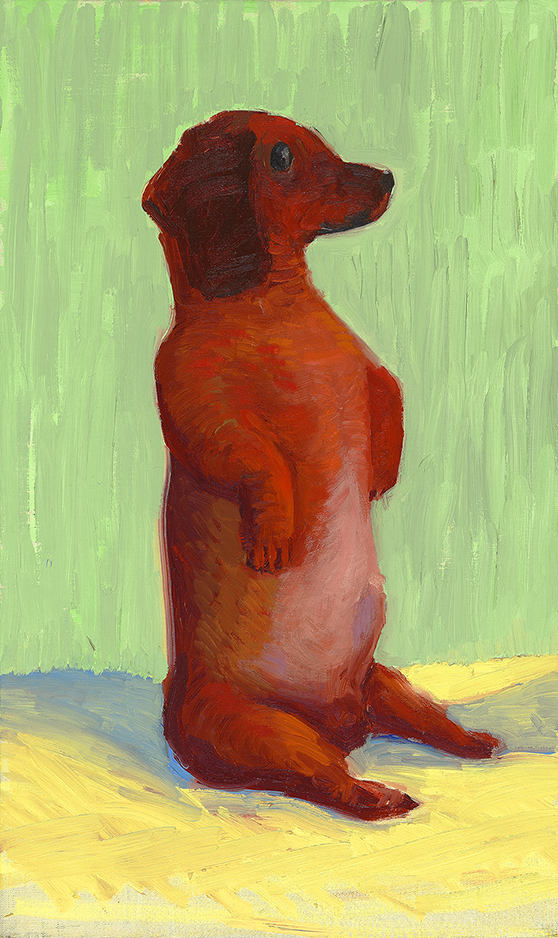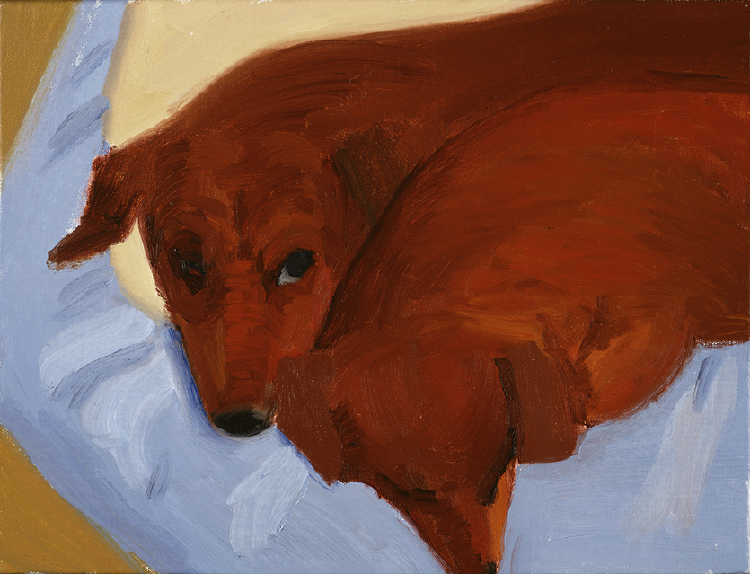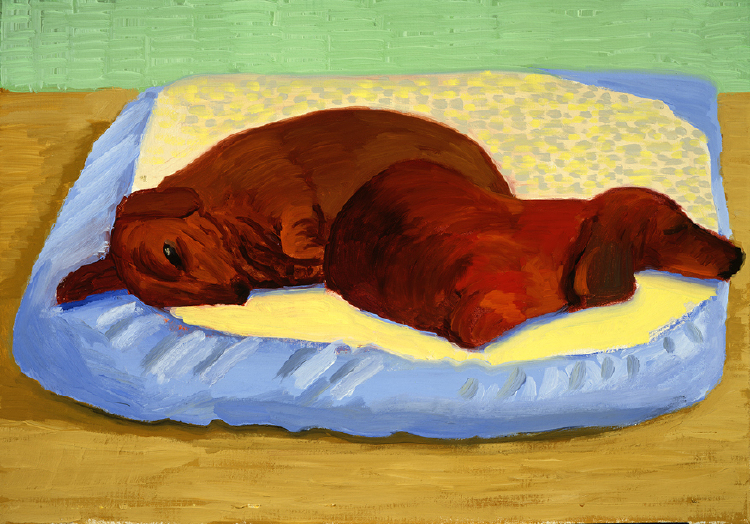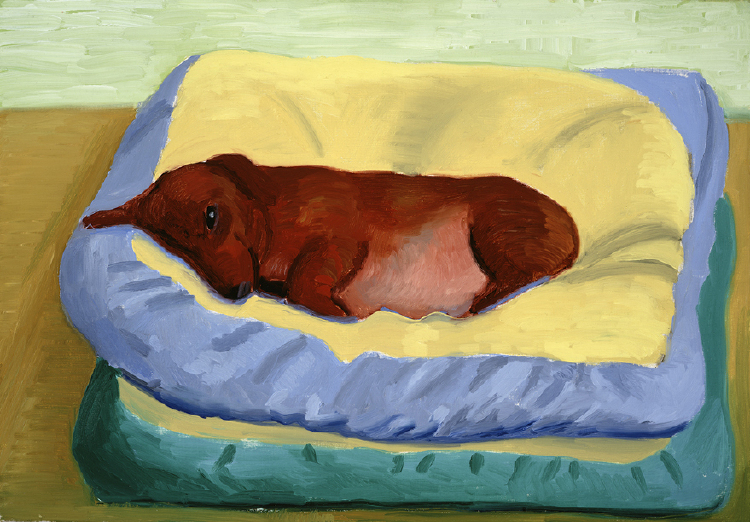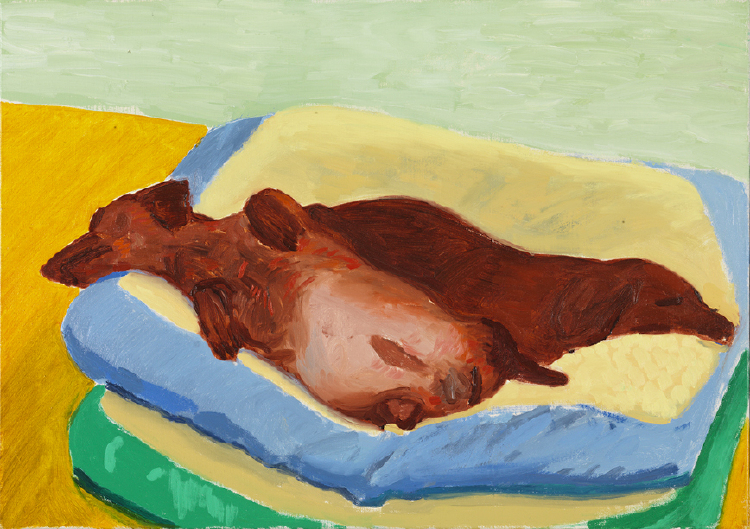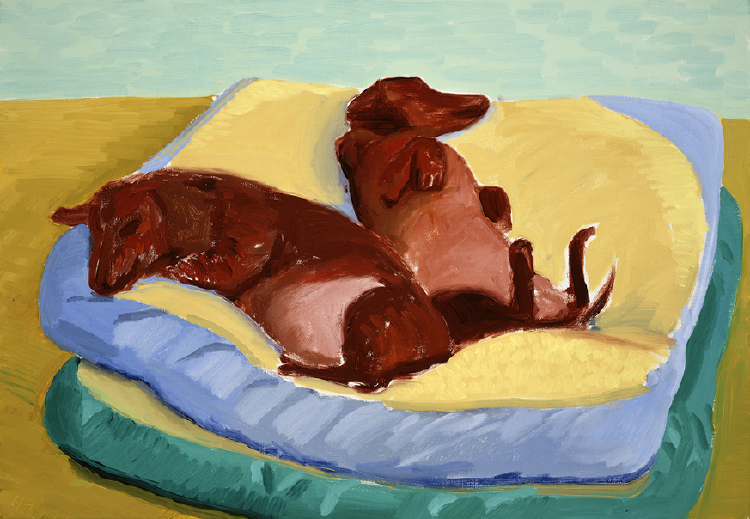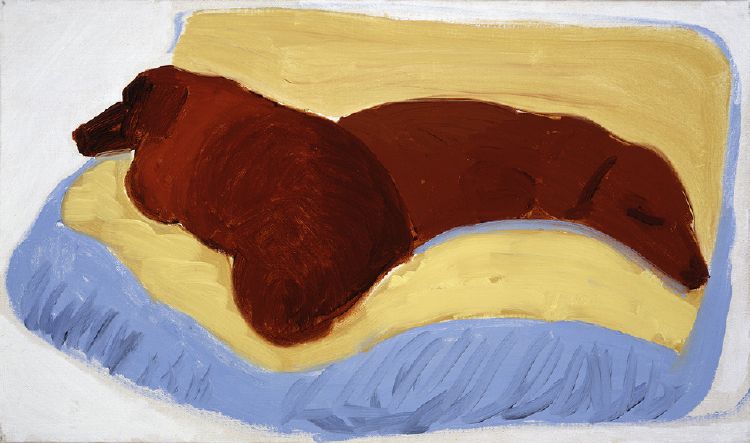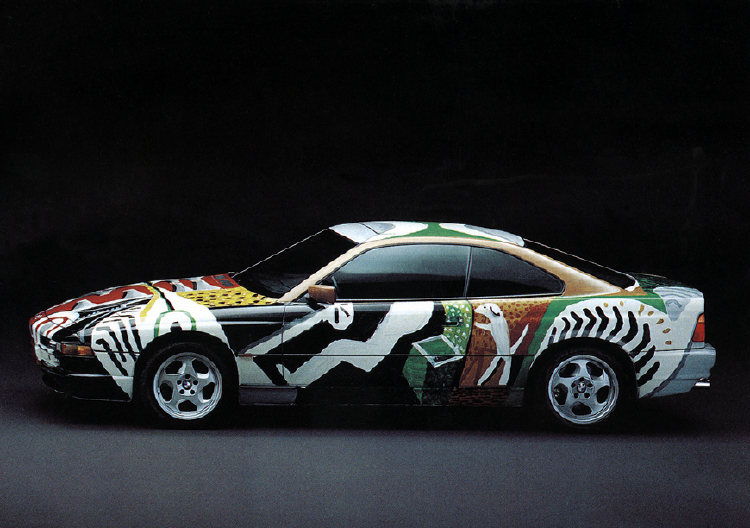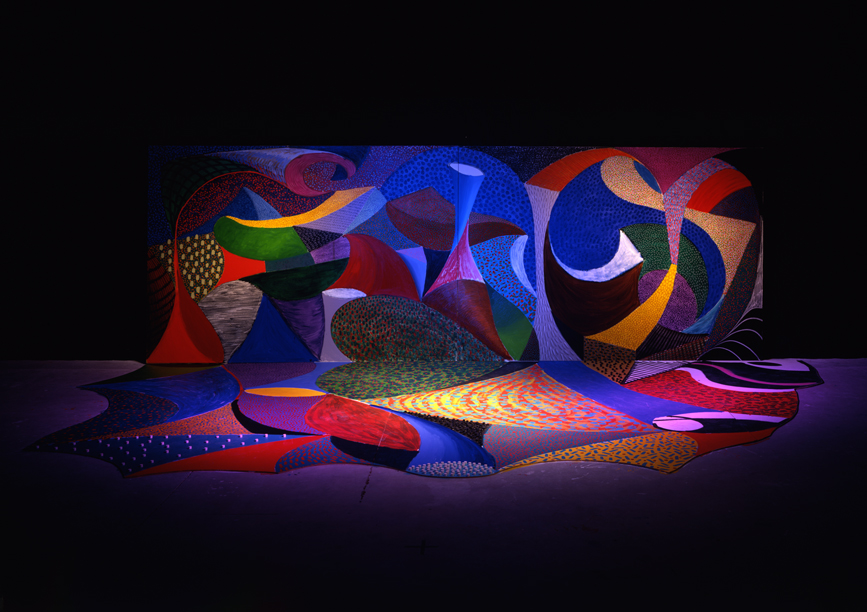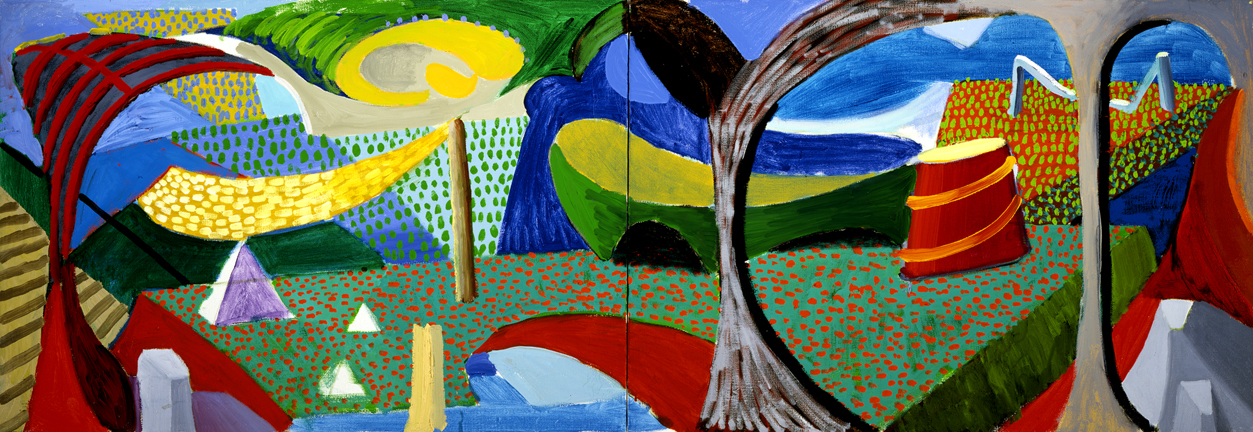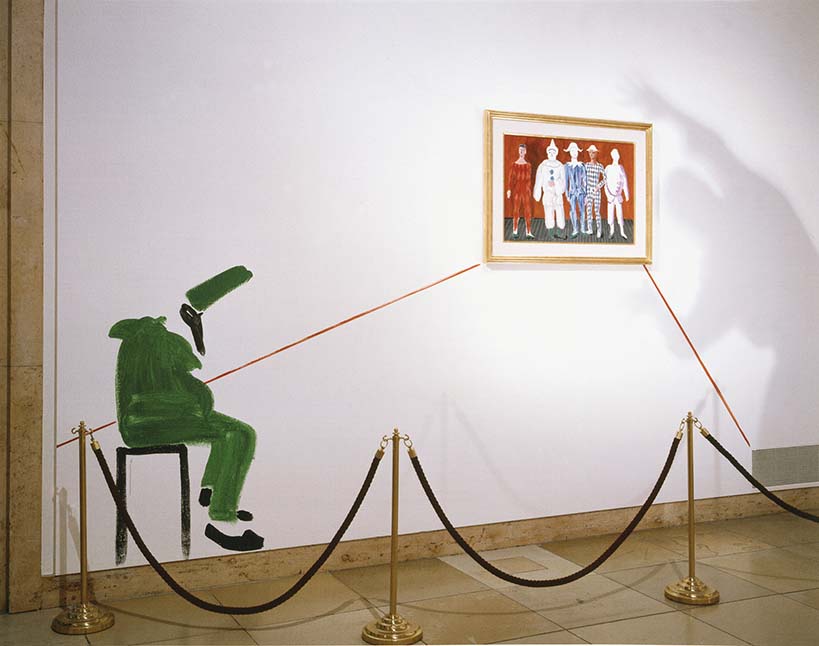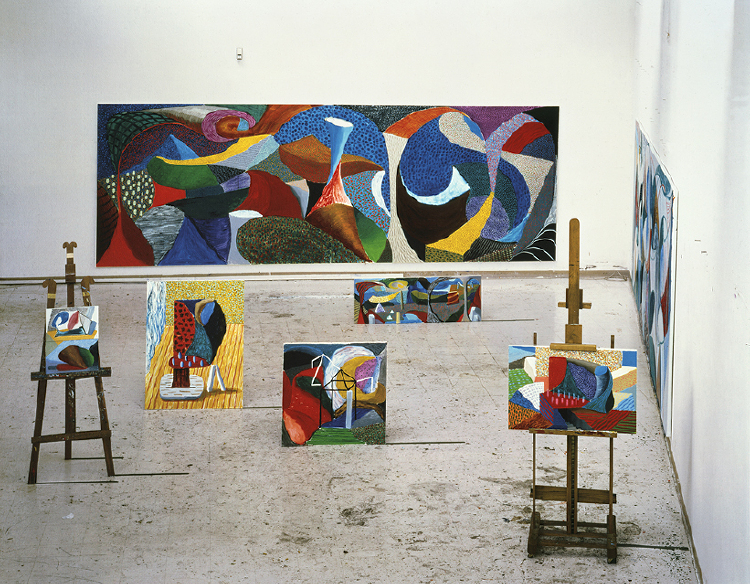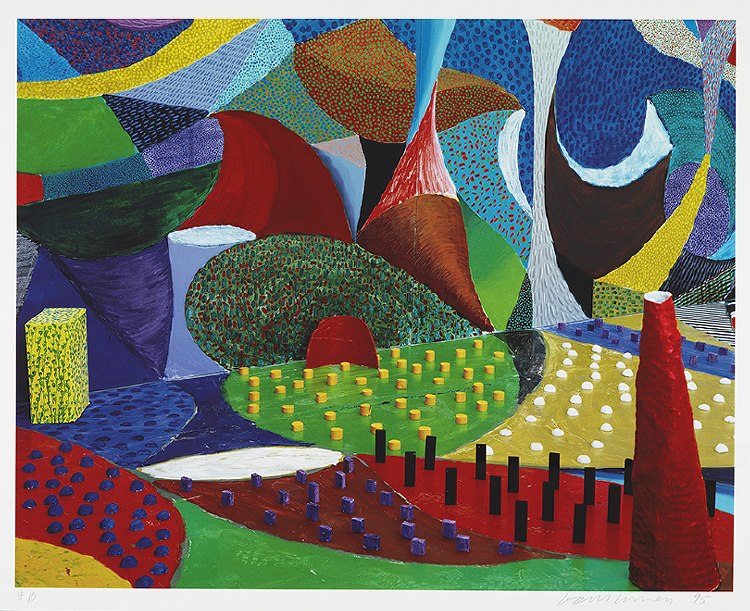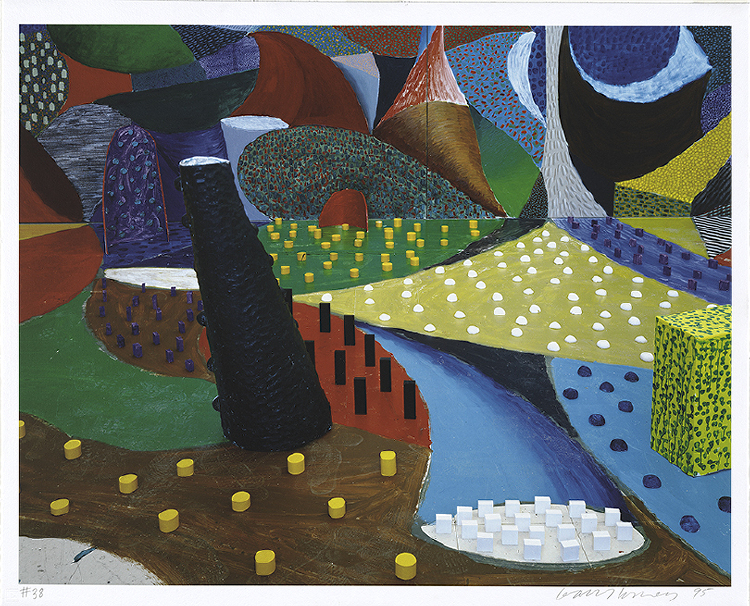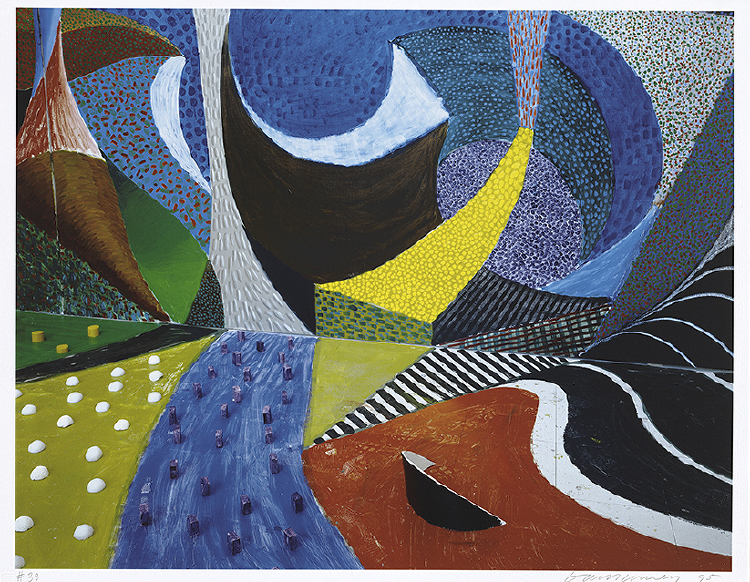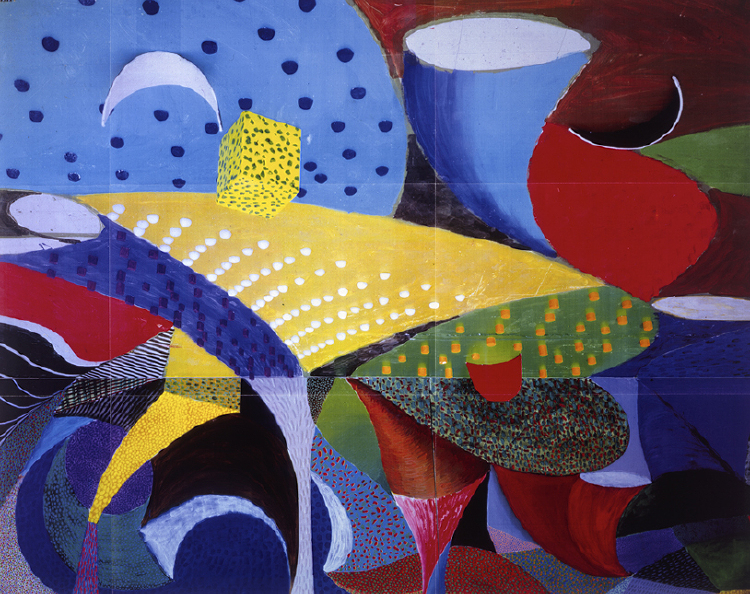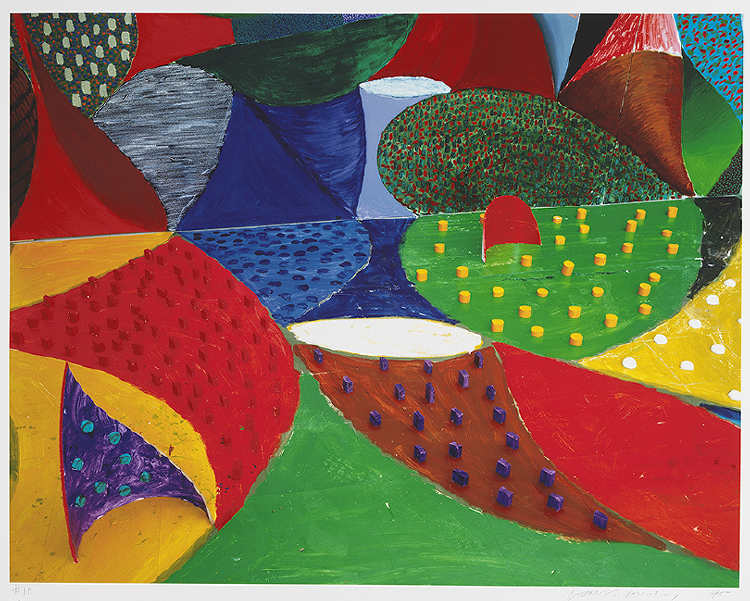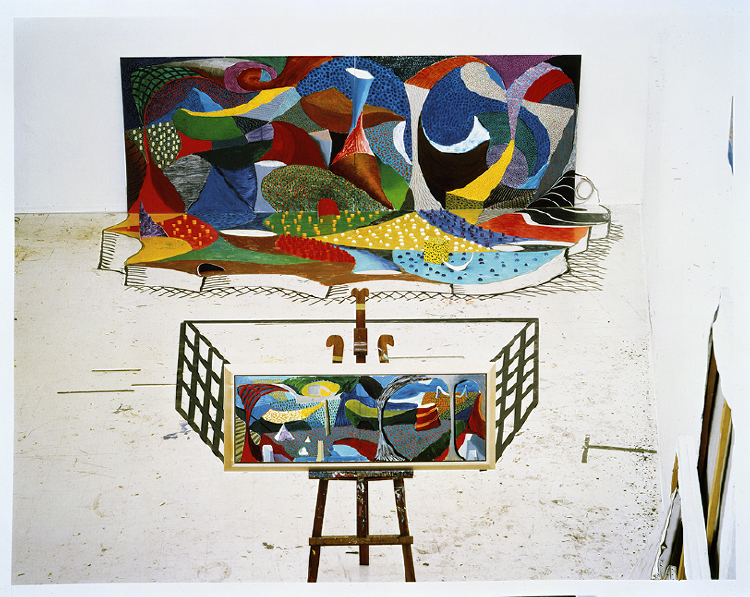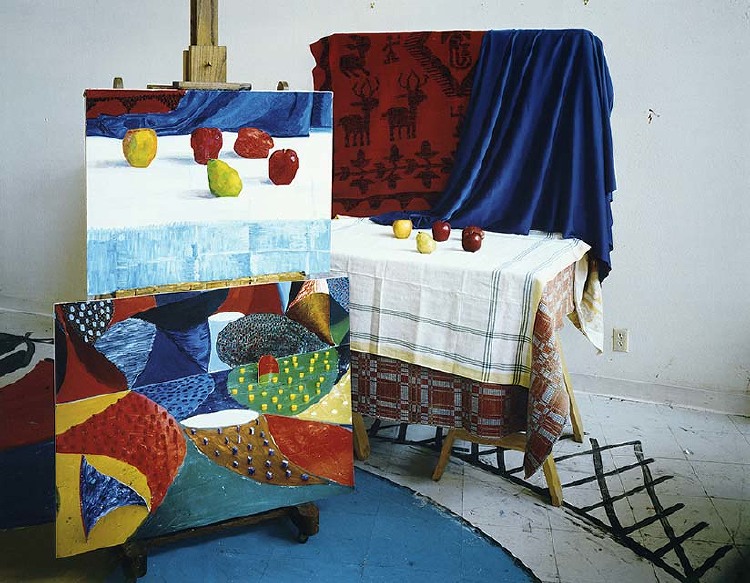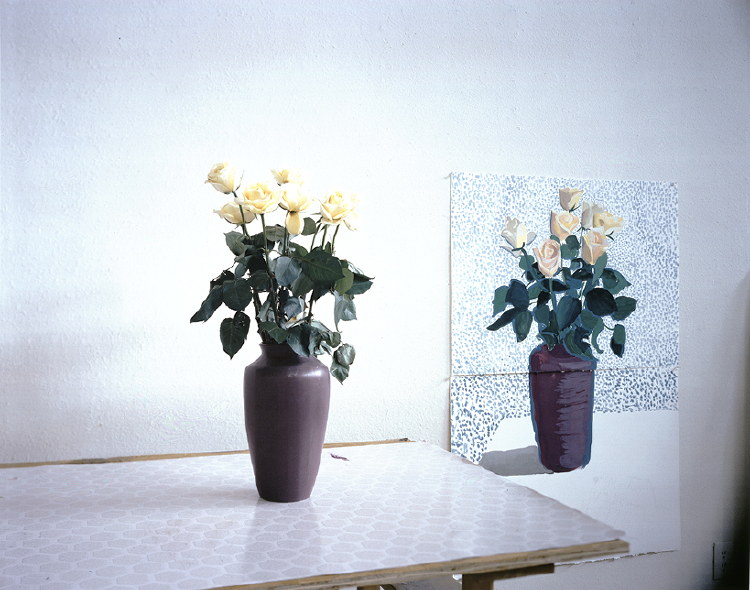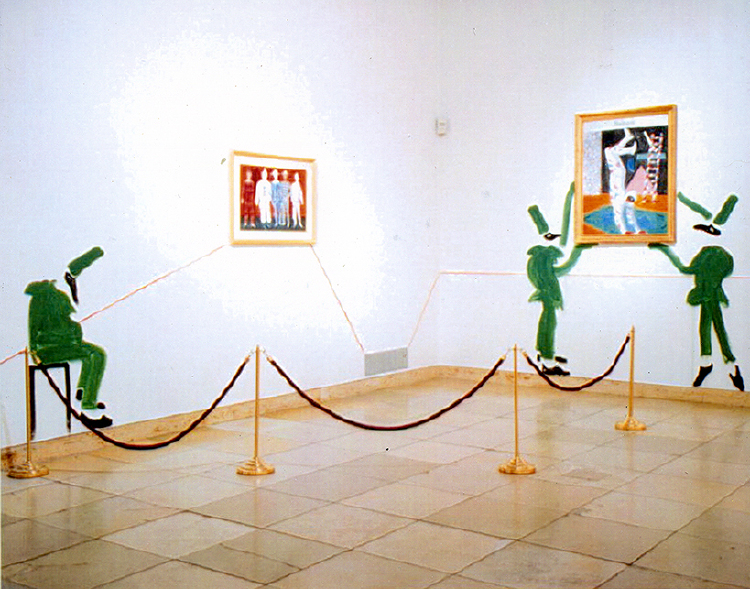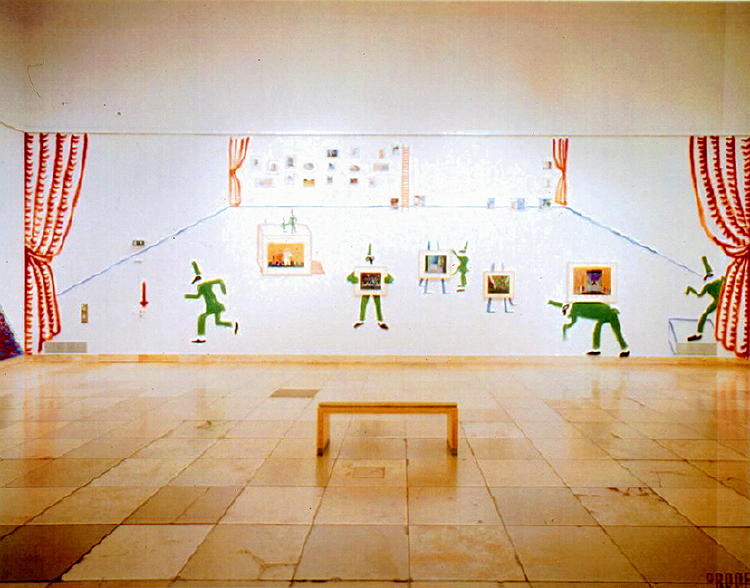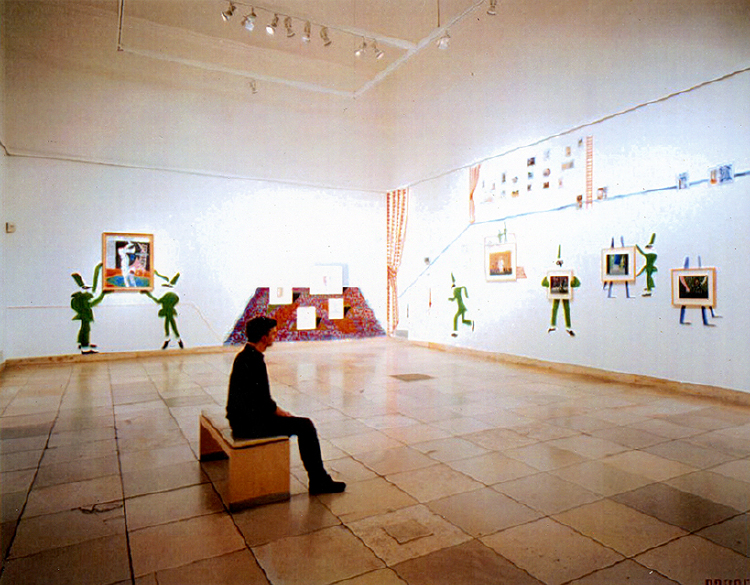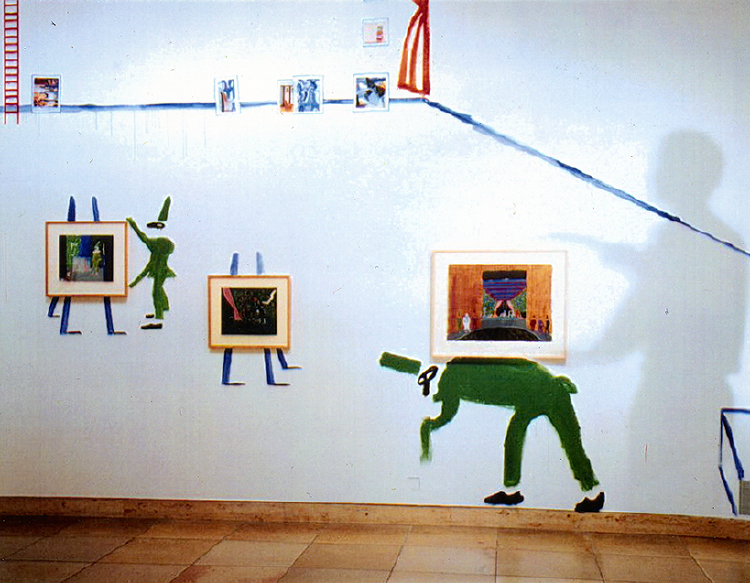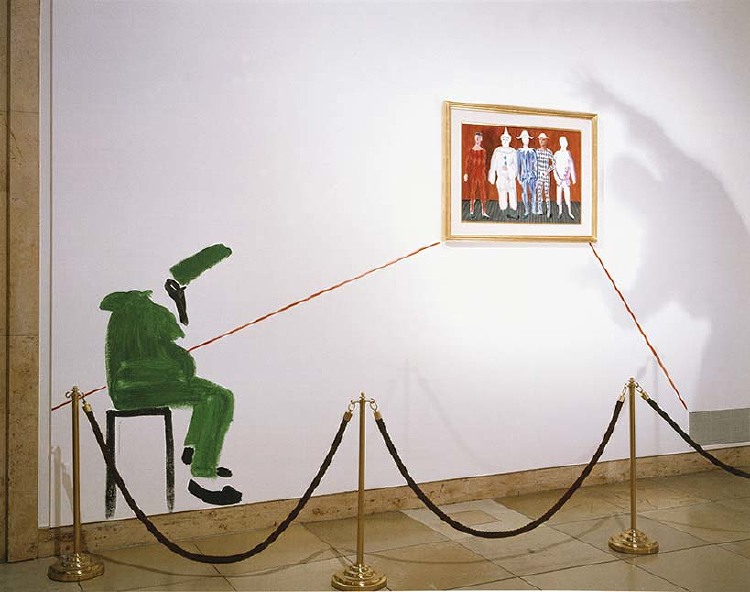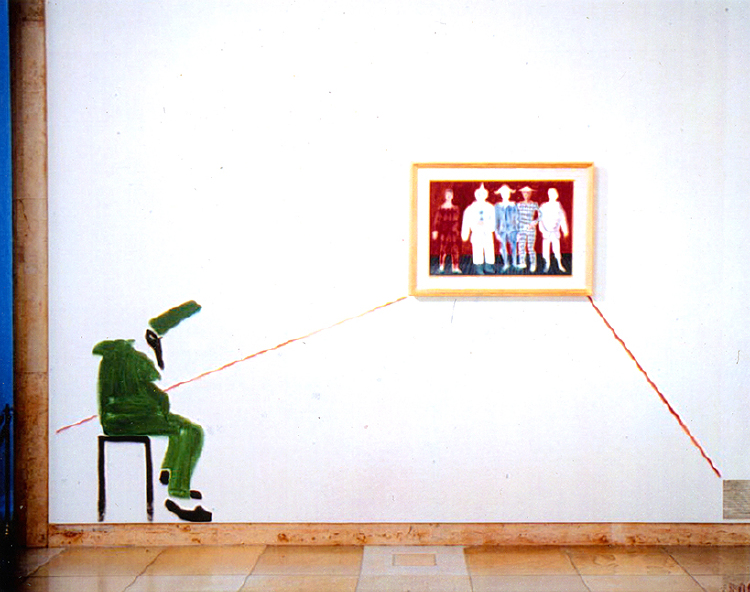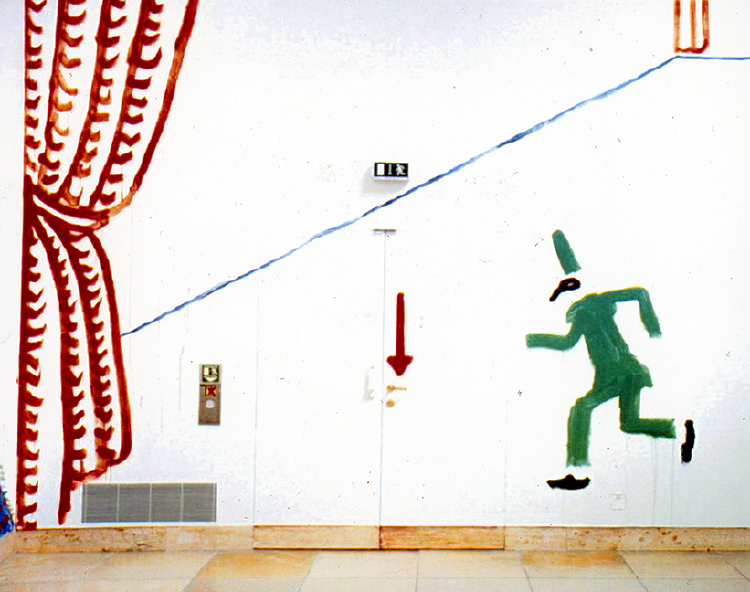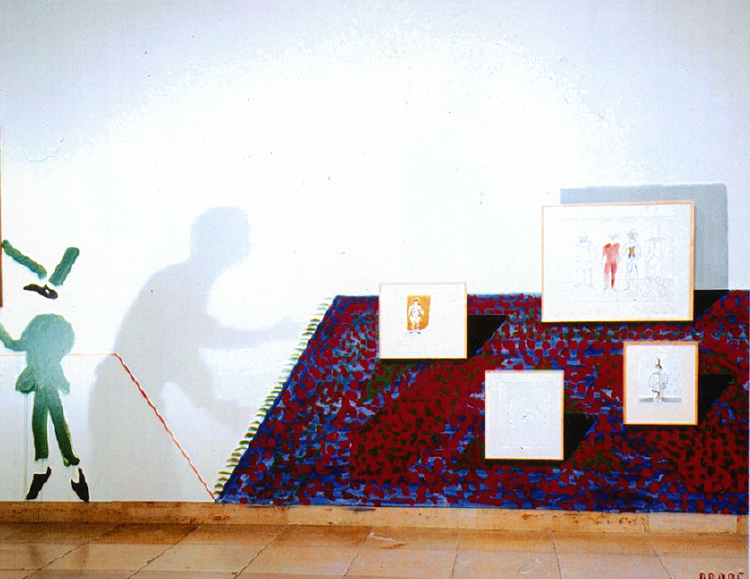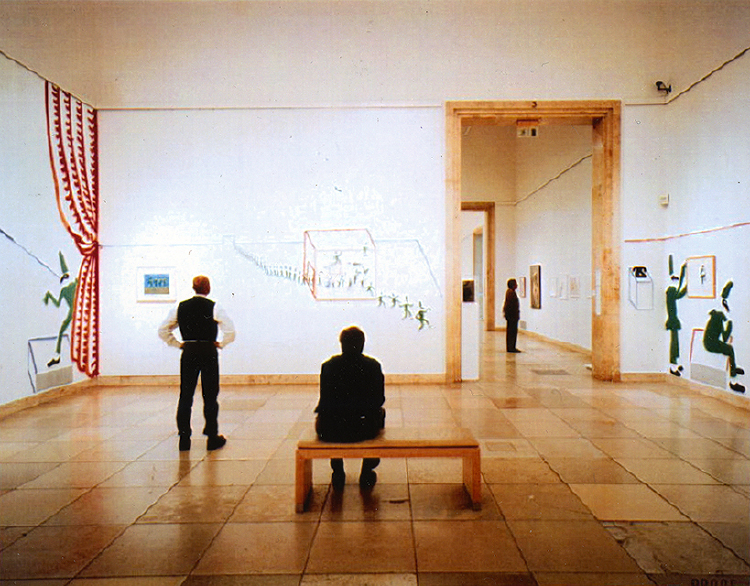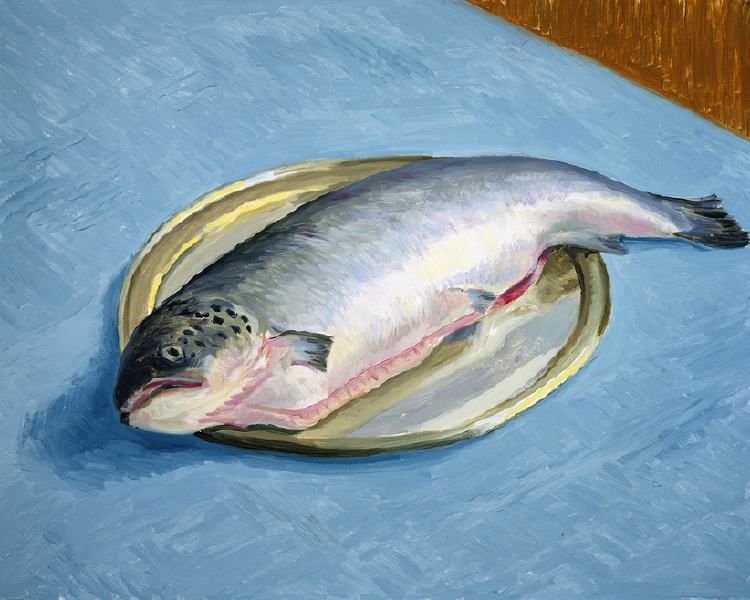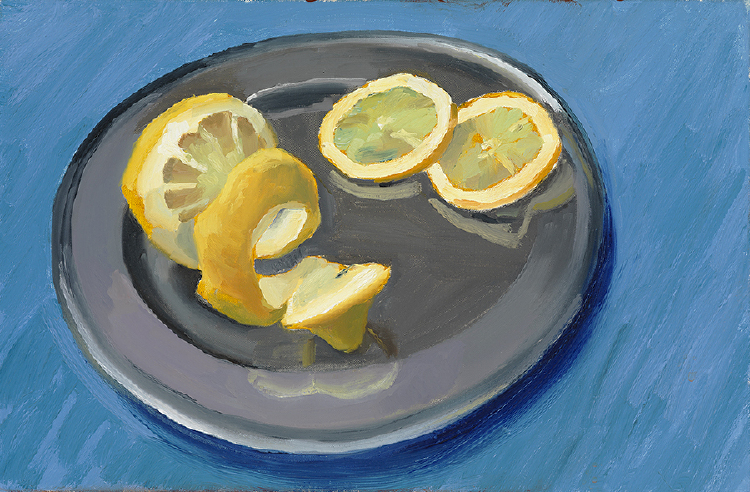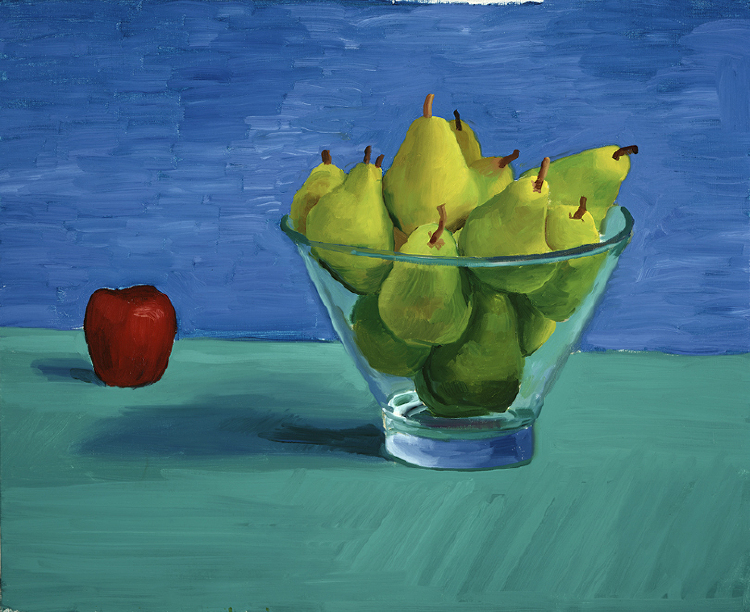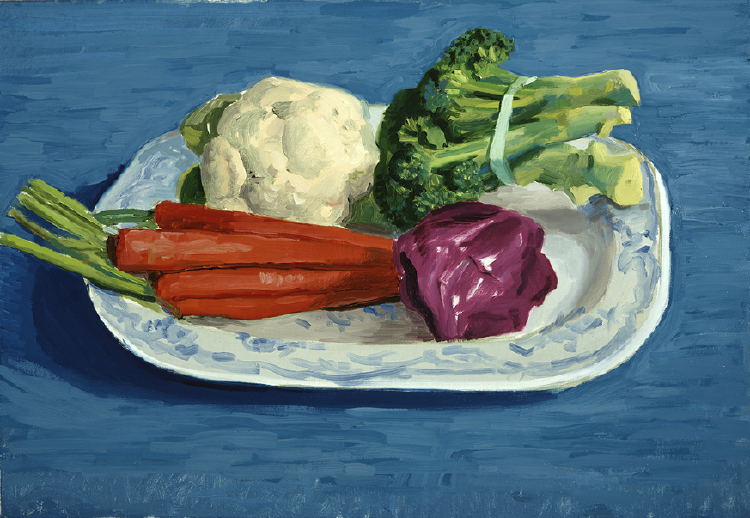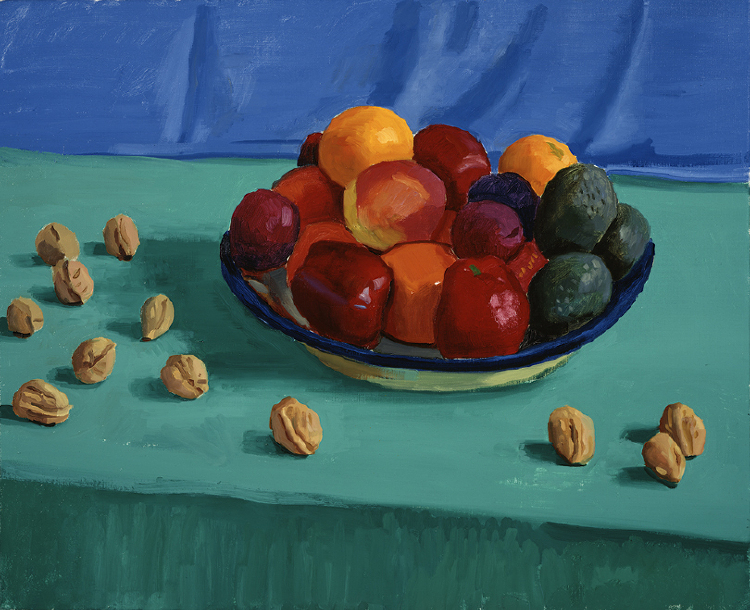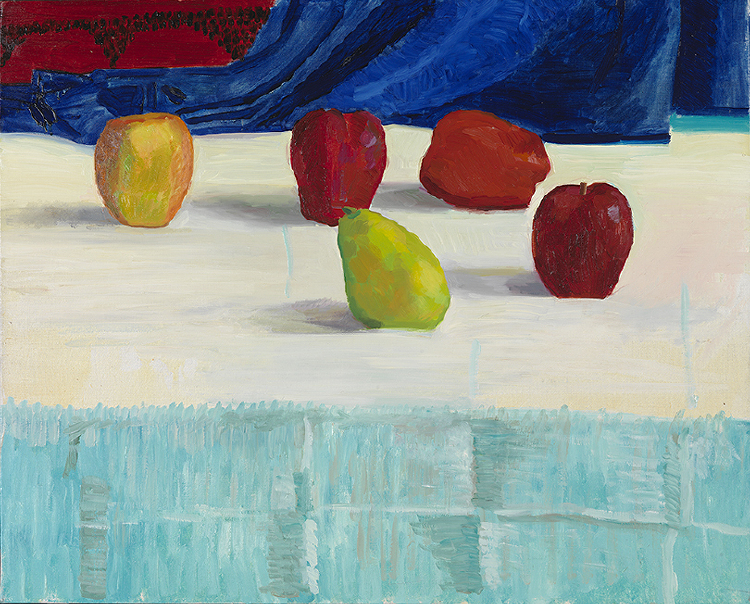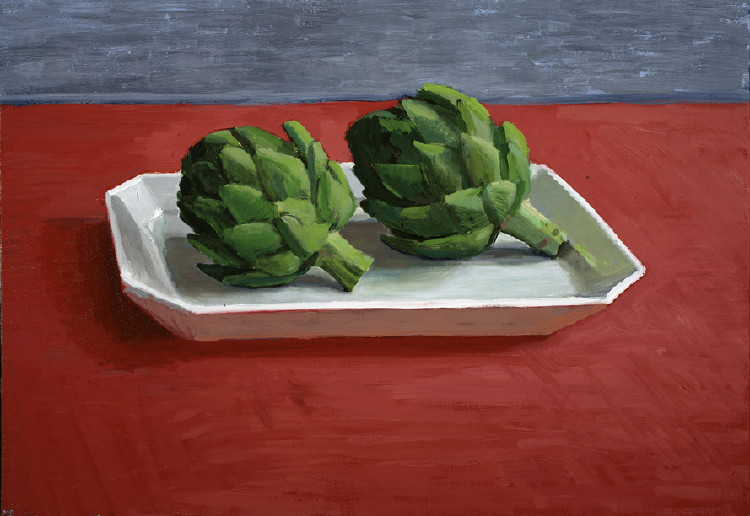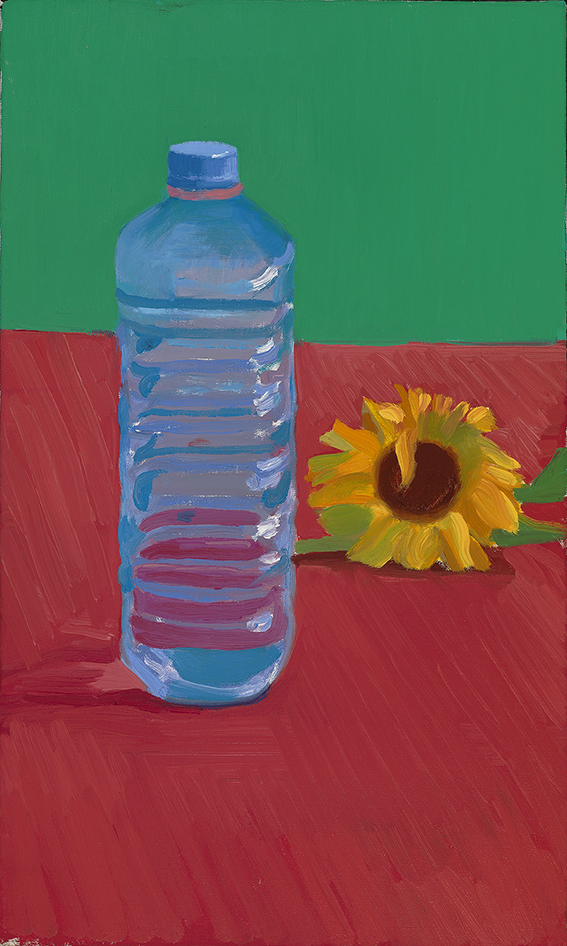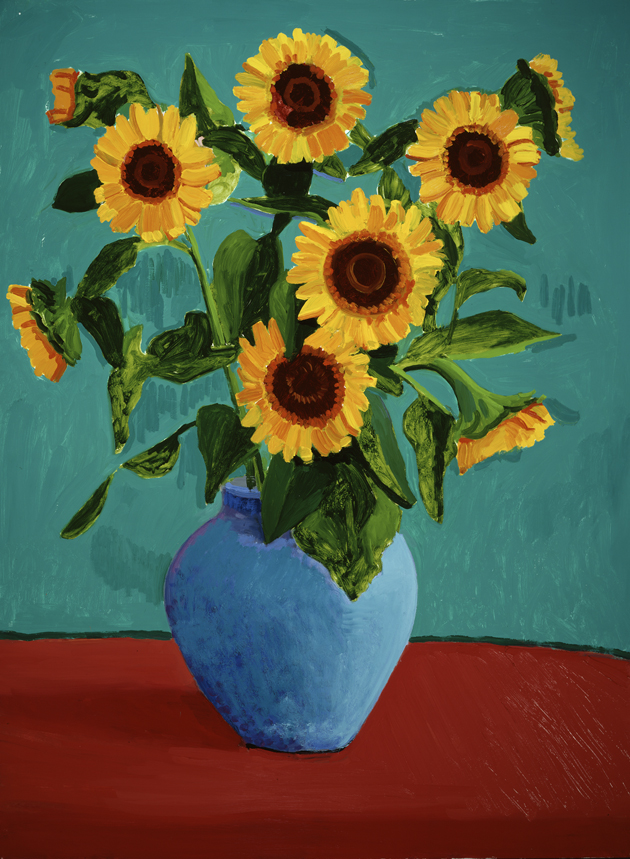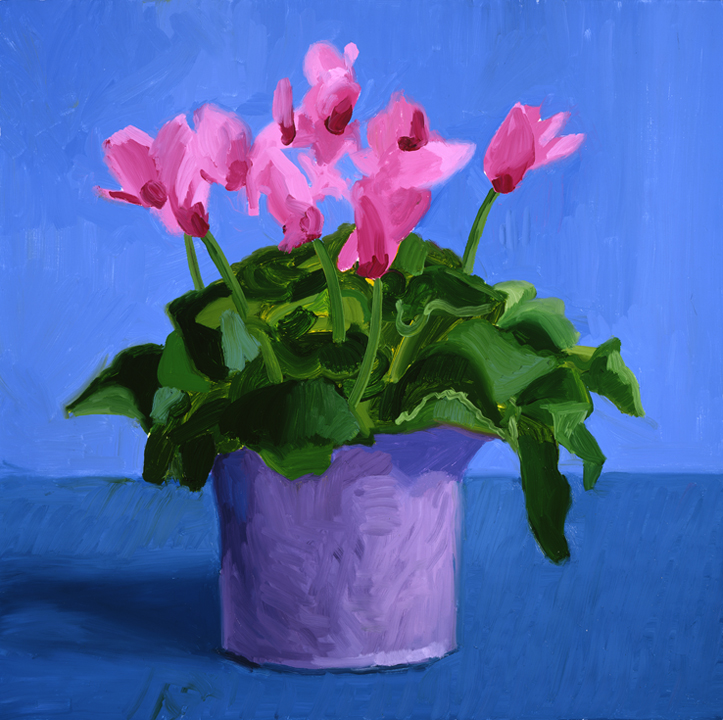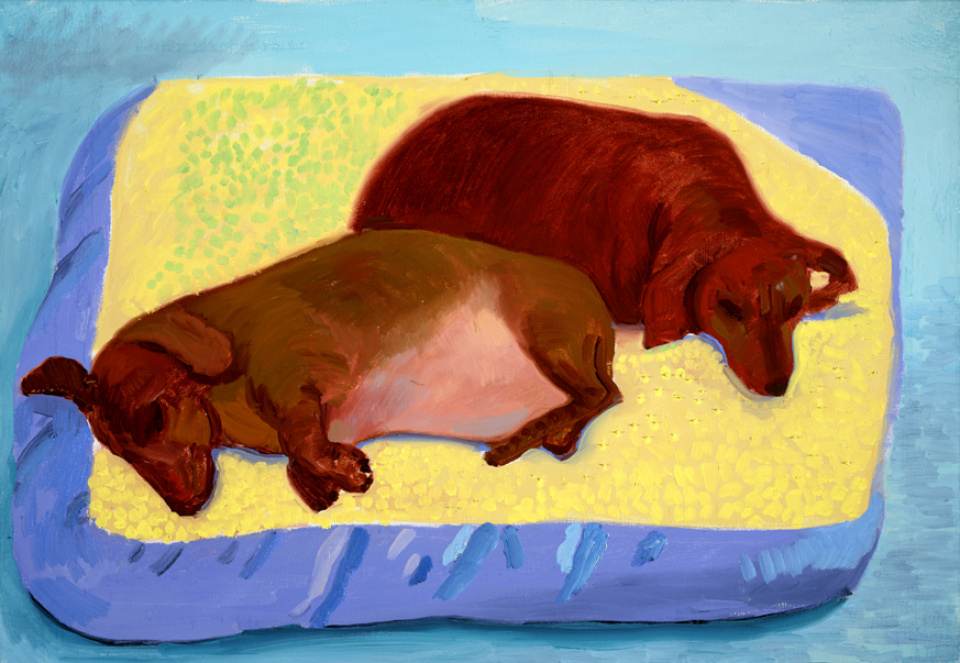
Dog Paintings
Hockney watched numerous friends die over the preceding years, but the death of Henry Geldzahler affects him greatly. He retreats to Malibu with his canine friends [NESTED]where he completes a series of drawings and paintings of his beloved dachshunds, Stanley and Boodgie.
I wanted desperately to paint something loving .... I felt such a loss of love I wanted to deal with it in some way. I realized I was painting my best friends, Stanley and Boodgie. They sleep with me; I’m always with them here. They don’t go anywhere without me and only occasionally do I leave them. They’re like little people to me. The subject wasn’t dogs but my love of the little creatures.
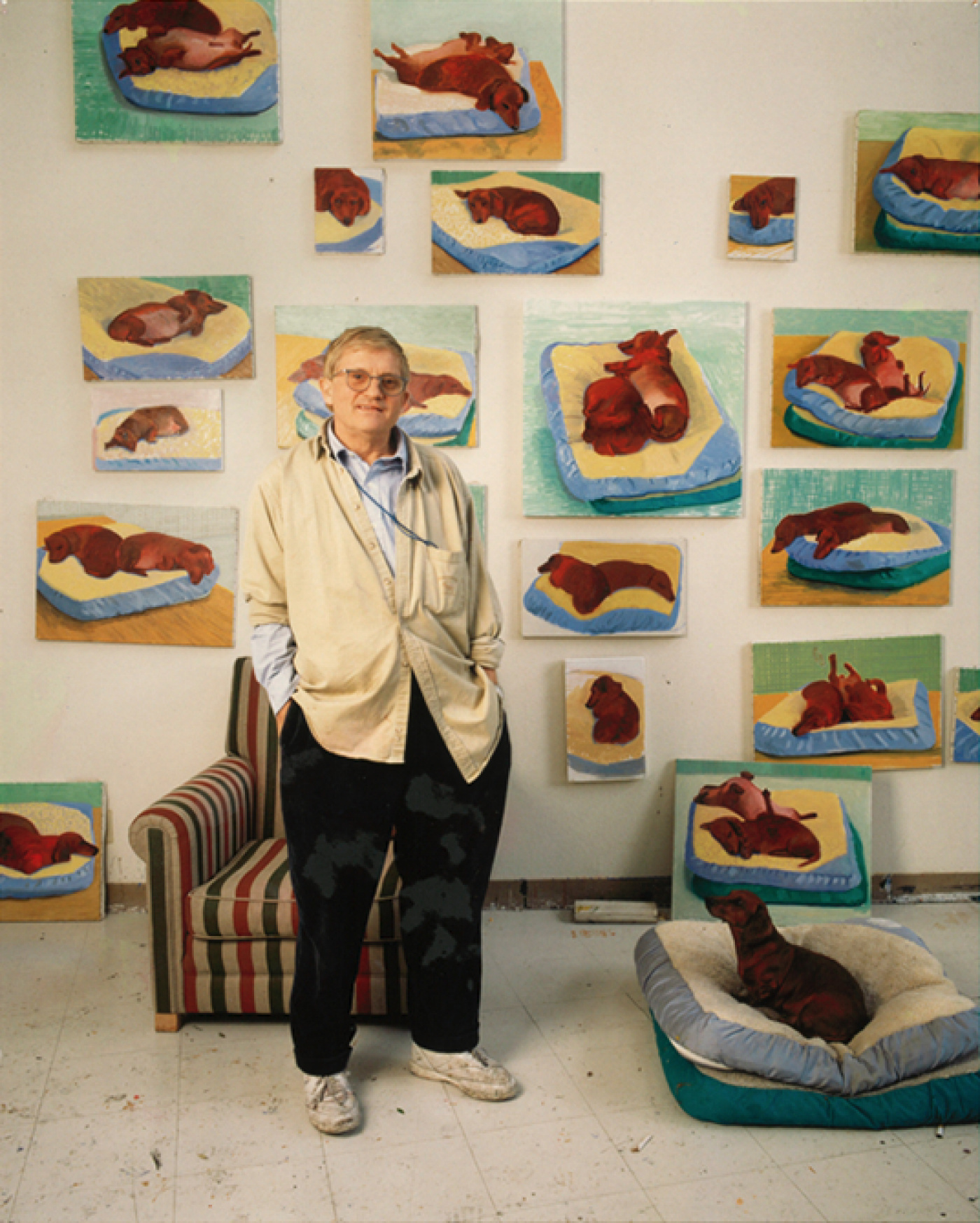

Drawing retrospective
In Hamburg at the Kunsthalle, a major retrospective of Hockney’s drawing is tremendously popular, bringing in over 40,000 visitors before it travels to the Royal Academy of Arts in London and the Los Angeles County Museum of Art.
In the courtyard of the RA, during the drawing retrospective, a BMW Art Car by Hockney is on view, which features elements of landscape and figure painting on its body.
Painting as Performance
In his studio, he is deeply engaged across a range of genres, from flower paintings and pet portraits to more experimental works that investigate the nature of seeing. The series Painting as Performance develops from the Painted Environments of two years prior, but now Hockney is involving theatrical lighting effects in the making and display of composite images—photographing works in progress under various lights, printing the images, and further manipulating them through more painting and photography. Exemplary among these works is Snail’s Space, which measures seven by twenty feet. It is, according to William Wilson’s review in the Los Angeles Times, “a superbly realized painting for painting’s sake, like a symphony that constantly reinvents its own harmonics.”
Snail’s Space changed quite a bit. The original painting is on two canvases measuring 84 by 240 inches, but I decided to continue the painting on the floor immediately in front of it, so we constructed a three-dimensional extension using real cubes, cones, and cylinders. Then I decided to experiment with computer-controlled lighting, the type they use at pop concerts, to physically change the appearance of colors within the painting. It demands a dark room to start with; we then arranged a computer program of subtle light changes lasting around eight minutes. I called it Painting as Performance, meaning if you put a sequence of lights on it, it is passing through time, which in turn means a performance. From when it begins to when it stops, it is theater and painting combined.
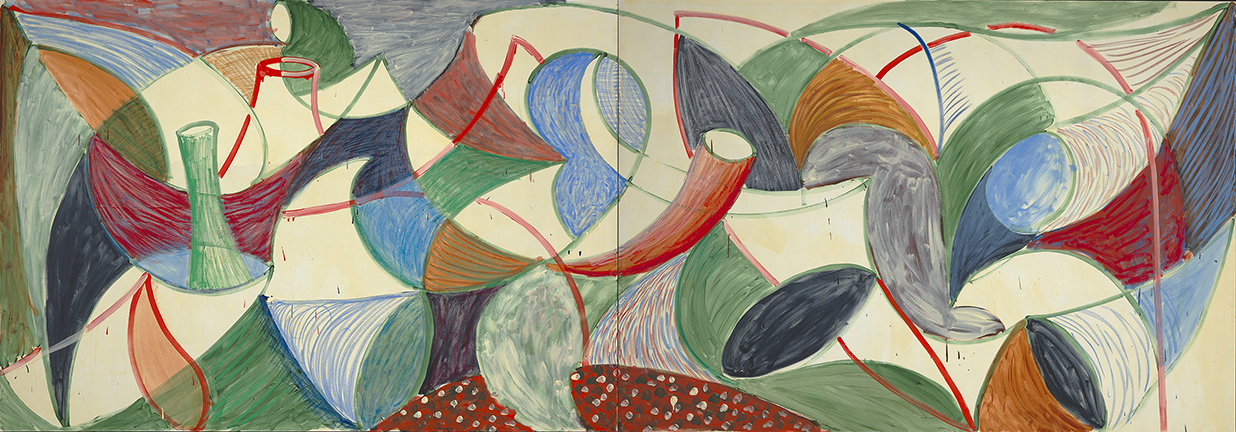
Digital Inkjet Prints
Hockney turns again to photography and plays with layers of illusion and reality. Using an 8x10 camera, Hockney photographs his own artwork and makes digital scans of the transparencies. The photographs are then printed by Nash Editions in Los Angeles on Somerset heavyweight paper using an inkjet printer. [NESTED]Three different, but connected, series emerge from this episode using a single viewpoint: current work in the studio, particularly Snail’s Space; flower paintings with their motifs; and a group exhibition in Munich entitled Pierrot, Melancholie und Maske where the Punchinellos from Hockney’s 1980 stage designs for Parade come to life and take over the gallery space. The three groupings are published by the David Hockney Studio in 1996 in a book entitled 20 Photographs.
It seems to me to be the most beautiful printing of photography I have seen. The colour of the paper seems almost physical. The surface of the paper itself is beautiful …. it will slowly change like everything else. What’s the point of an ugly piece of paper that will last forever?
Claude Monet in Chicago
Late in the year, at the Art Institute of Chicago, Hockney is deeply affected by an exhibition of the work of Claude Monet (French, 1840-1926), another painter [NESTED]who captured light’s delicate atmospheric presence.
You don’t need an art critic to tell you Monet was a great artist. You can see it yourself; you absolutely can. I came out of that exhibition and it made me look everywhere, everywhere intensely. That little shadow on Michigan Avenue, the light hitting the leaf. I thought: "My god, now I’ve seen that. He’s made me see it." Most people don’t see things like that. They can’t get pleasure like that, can they? Monet gives it to you though, for he was a generous spirit, and you can then take pleasure in looking at things freshly.
Exhibitions
Solo
- Some Large New Paintings and Twenty-Five Dogs Upstairs, L.A. Louver, Venice, CA, USA (Apr 7–May 6); catalogue.
- David Hockney, Nishimura Gallery, Tokyo, Japan (Apr 24–May 20).
- David Hockney Dog Paintings, 1853 Gallery, Saltaire, UK (Jun 26–Oct 1).
- Paintings and Photographs of Paintings, Museum Boijmans Van Beuningen, Rotterdam, The Netherlands (Oct 28, 1995–Jan 21, 1996), travels to Kunsthaus Wien (Feb 8–Apr 14, 1996); catalogue.
- A Drawing Retrospective, Royal Academy of Arts, London, UK (Nov 7, 1995–Jan 28, 1996); catalogue.
Group
- 46th Venice Biennale, Venice, Italy (Jun 11–Oct 15); catalogue.
Publications
Publications
- David Hockney: Paintings and Photographs of Paintings, Museum Boymans-van Beuningen, Rotterdam.
- David Hockney: Zeichnungen 1954-1994, A Drawing Retrospective, Hamburger Kunsthalle, Hamburg.
- Hockney: Modern Masters, by Peter Clothier, New York: Abbeville Press.
- David Hockney: Some Very Large New Paintings, by David Hockney, Los Angeles.
- David Hockney: A Drawing Retrospective, by Ulrich Luckhardt & Paul Melia, London: Royal Academy of Art and Thames & Hudson.
- David Hockney, edited by Paul Melia, Manchester and New York: Manchester University Press.
Honor
Honor
- Honorary Doctorate, University of Oxford.
